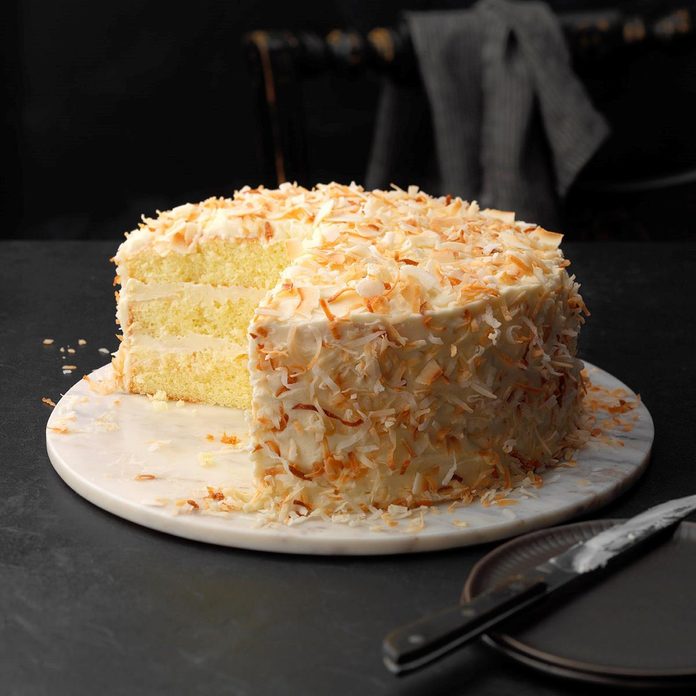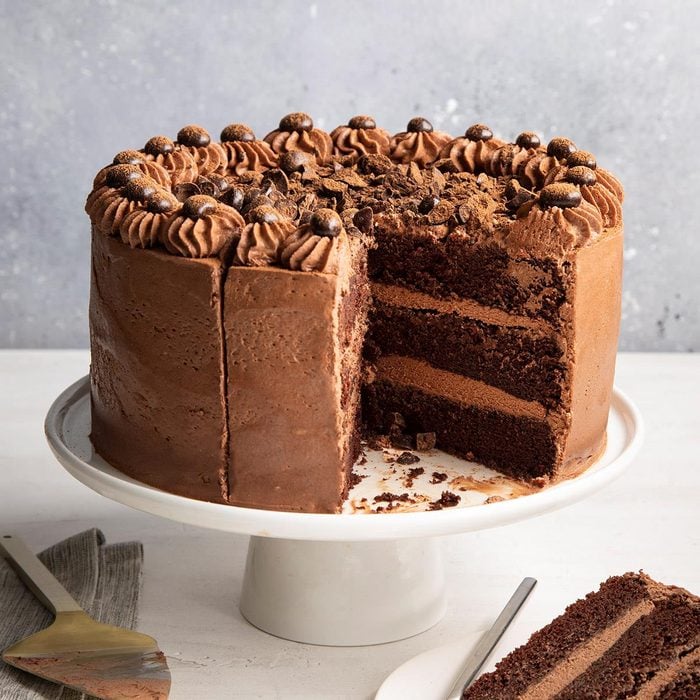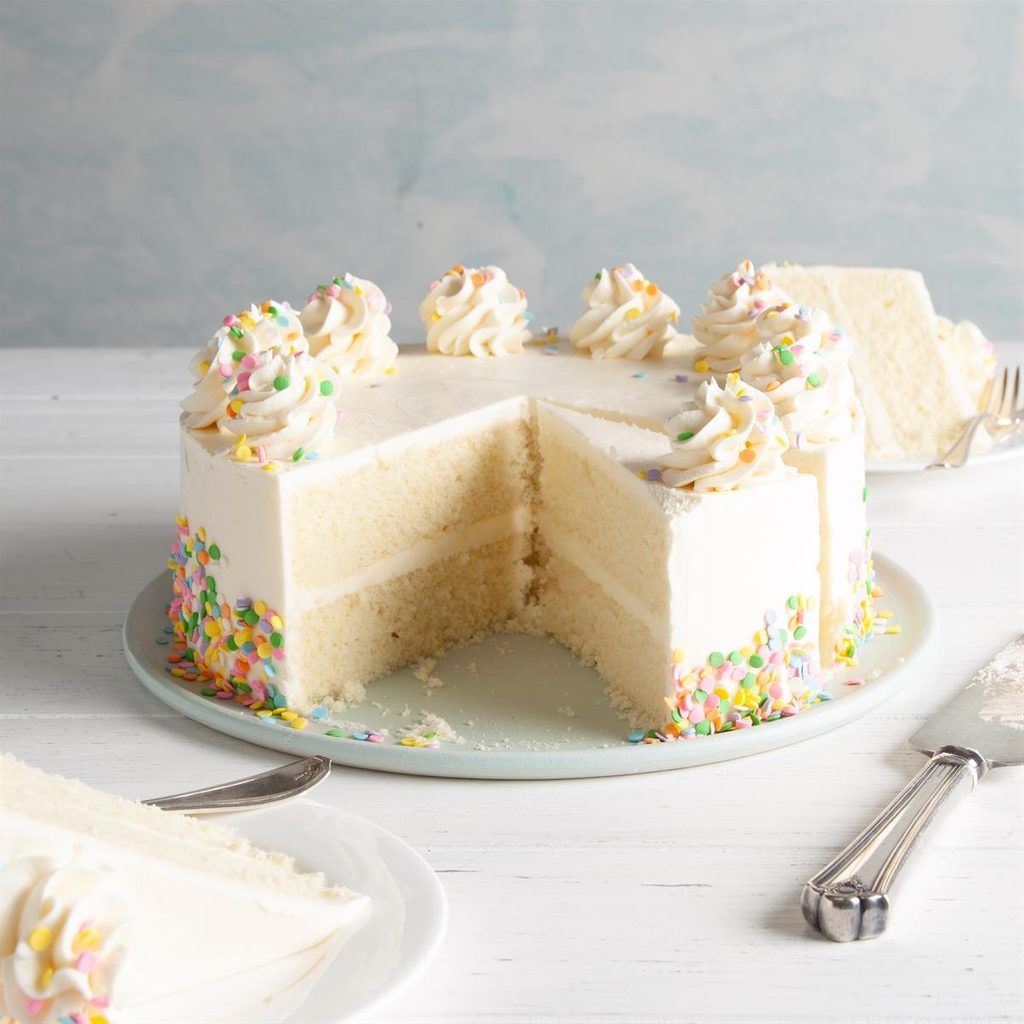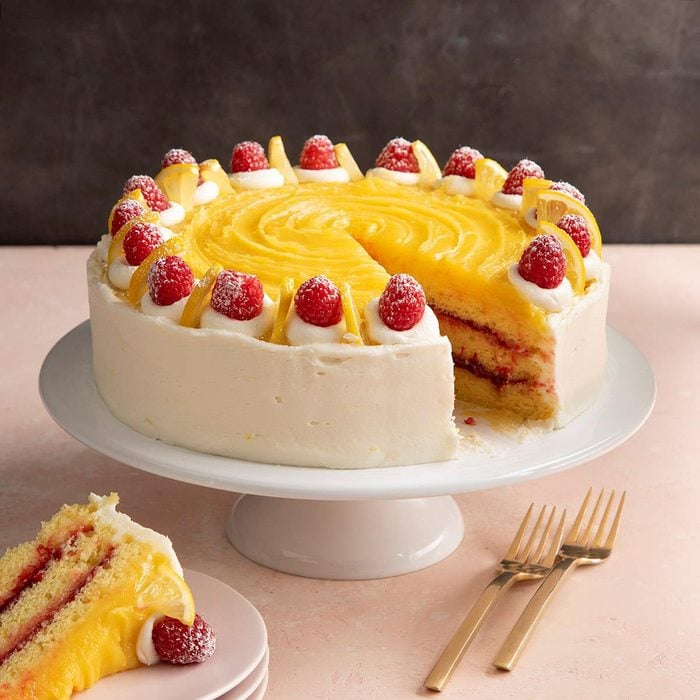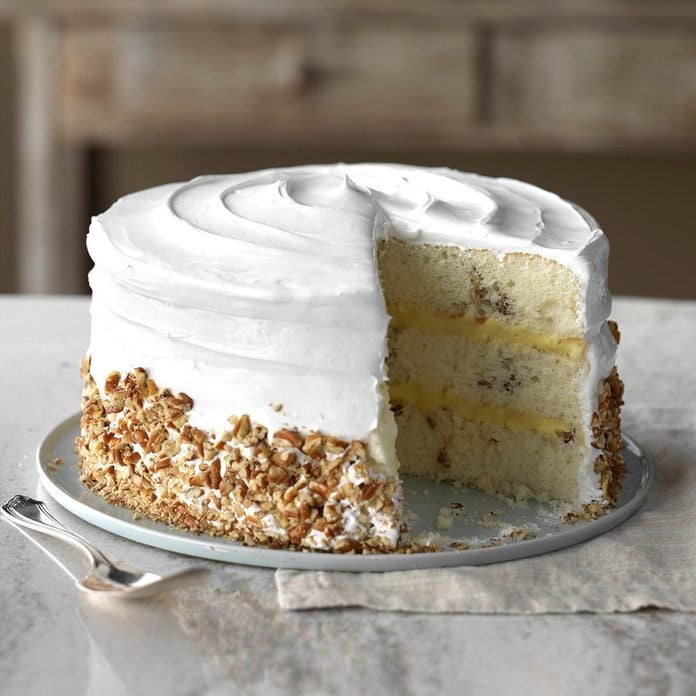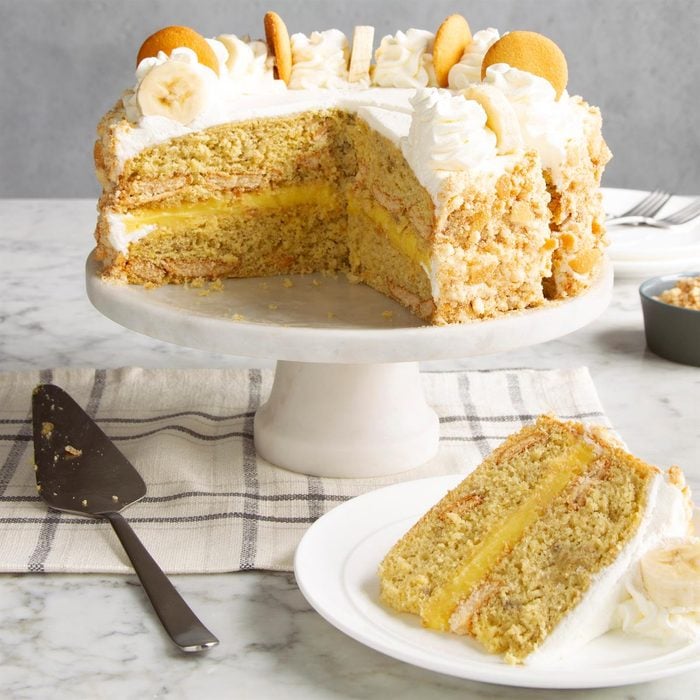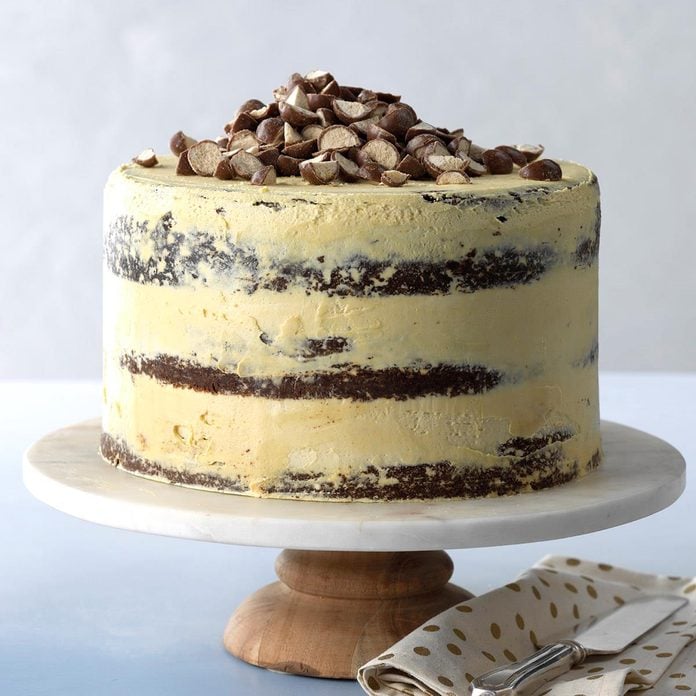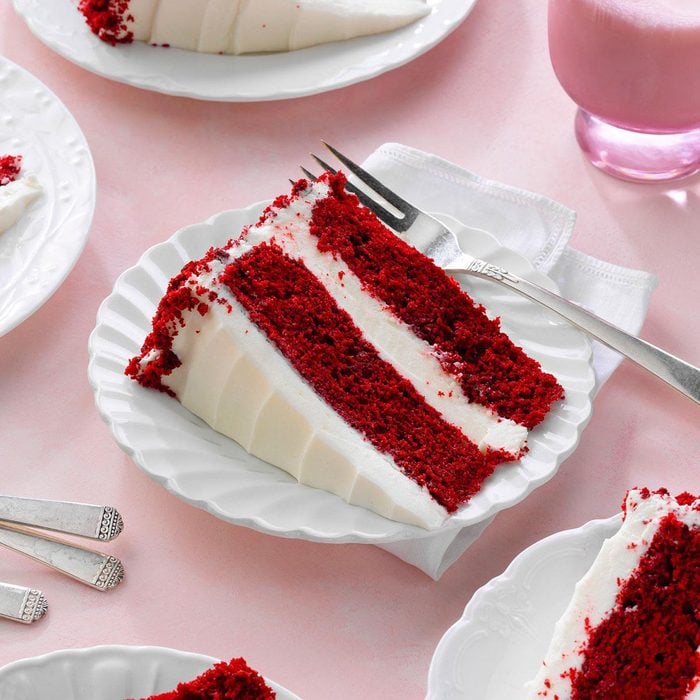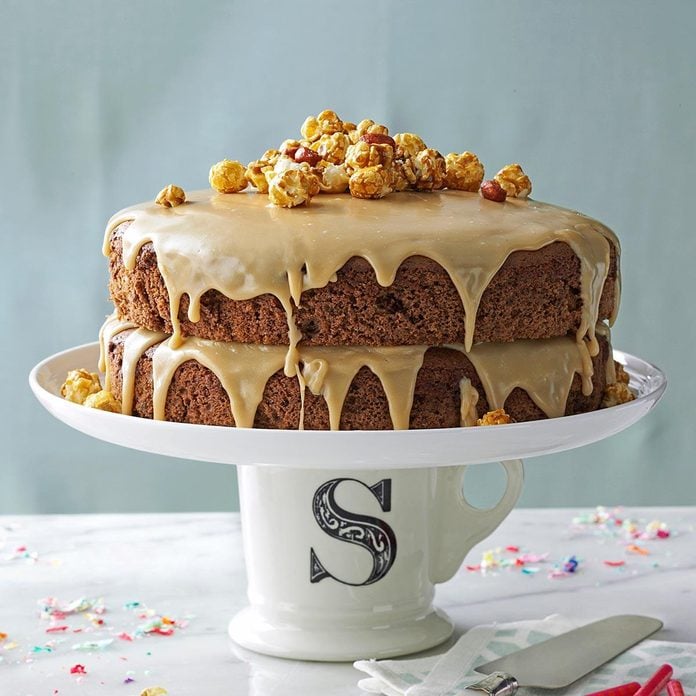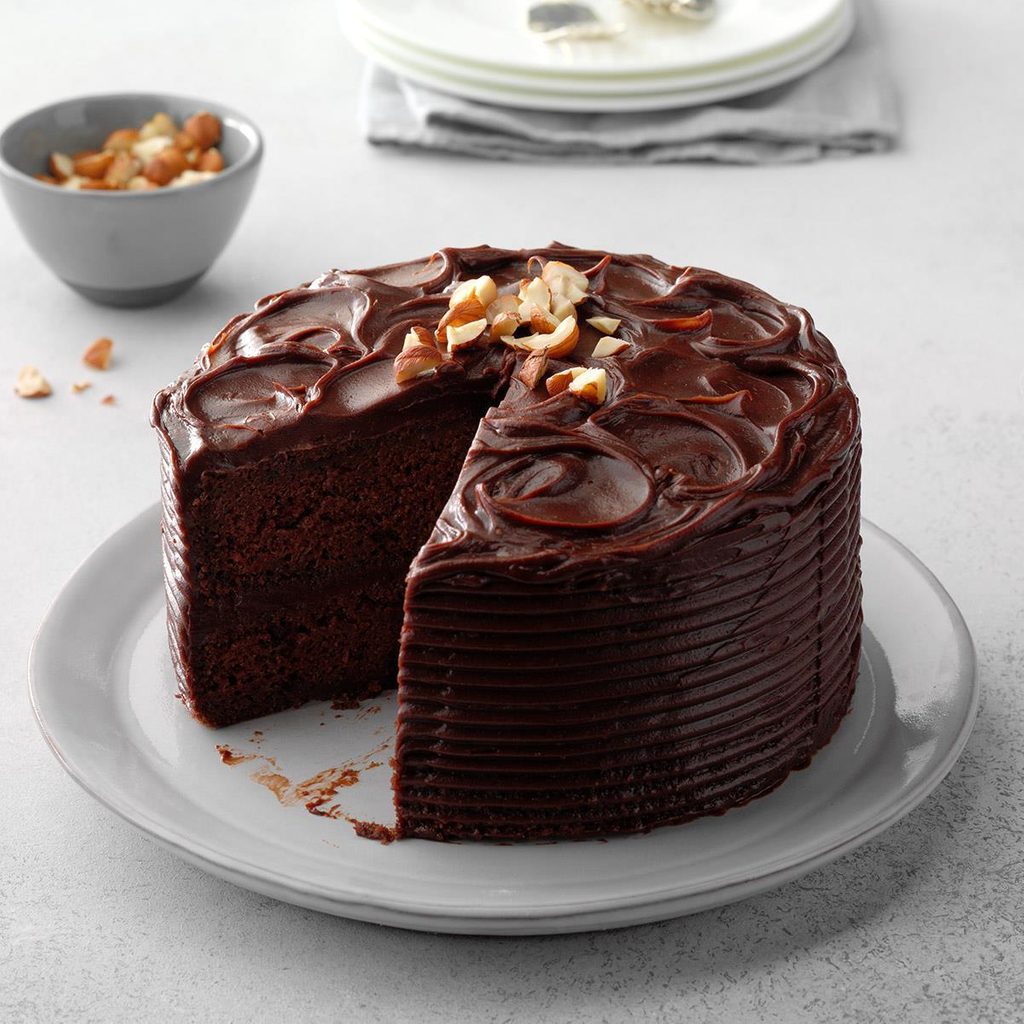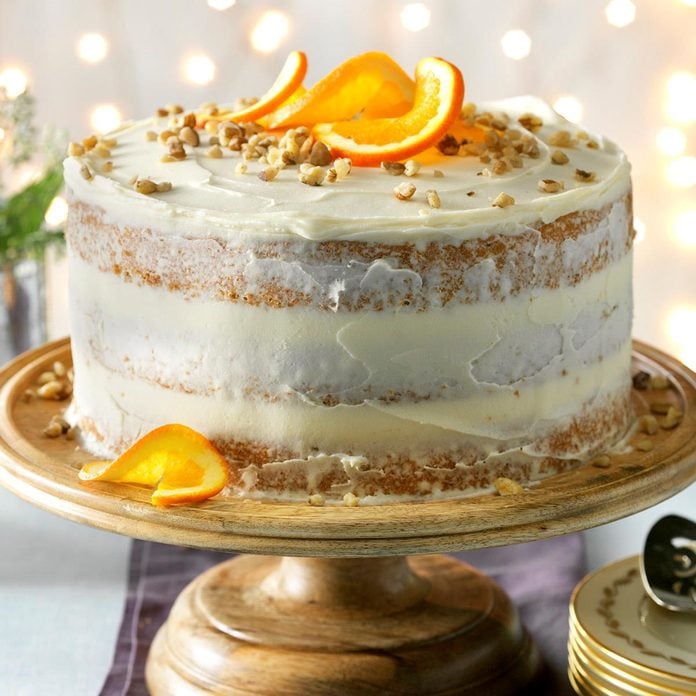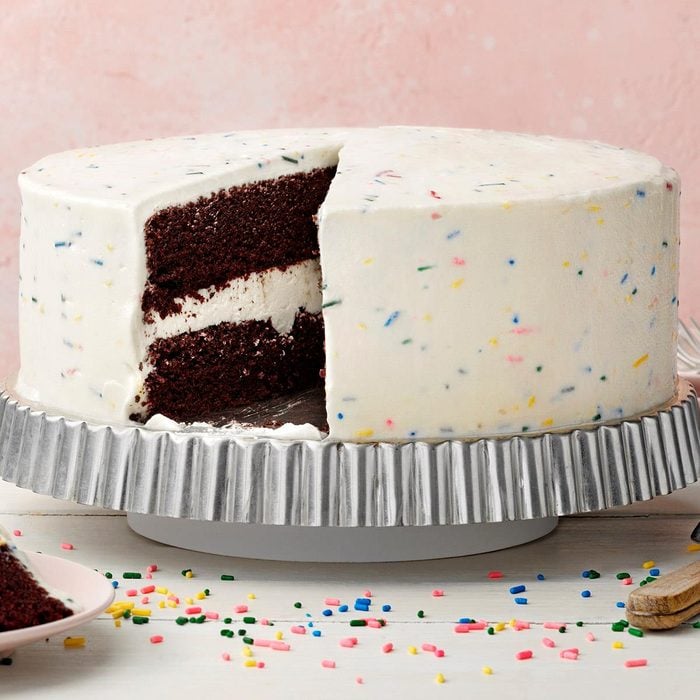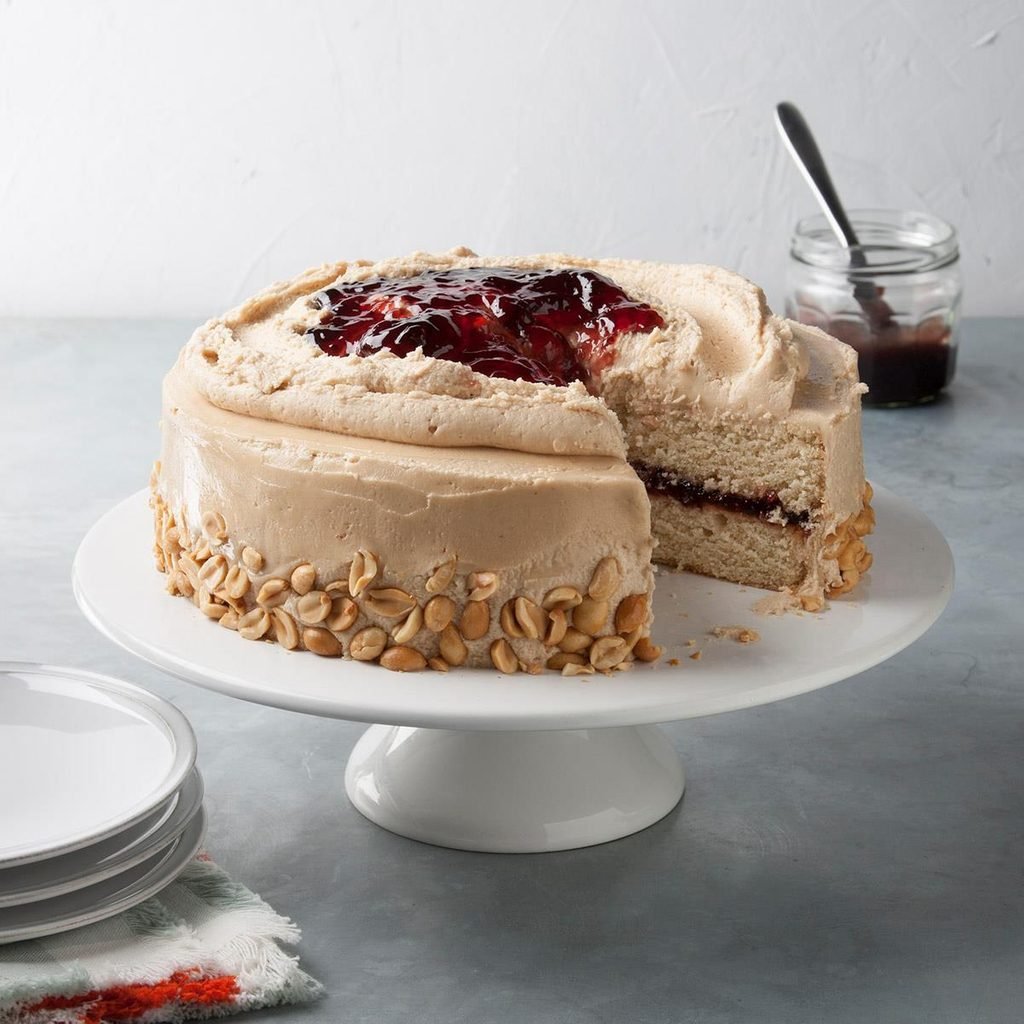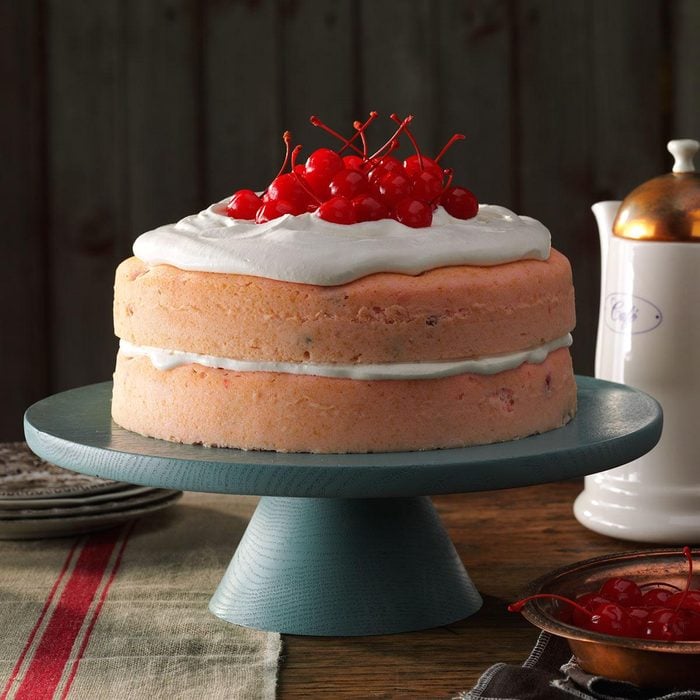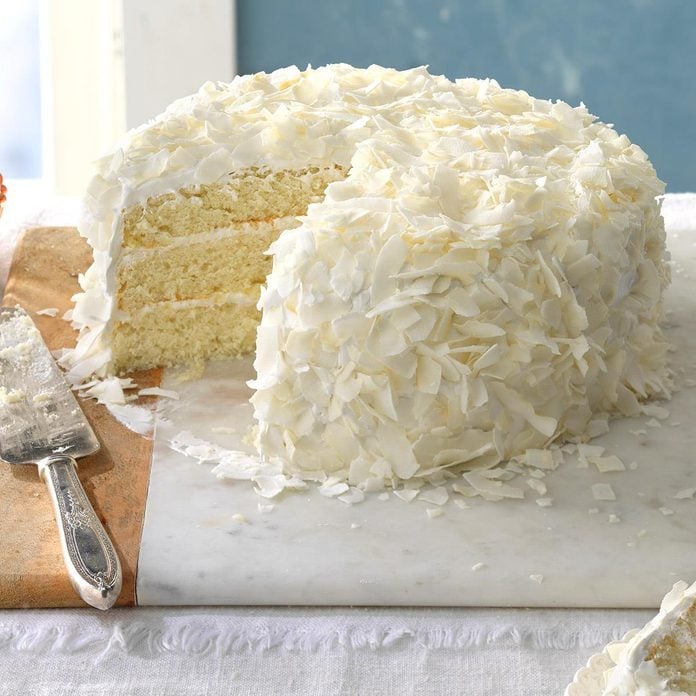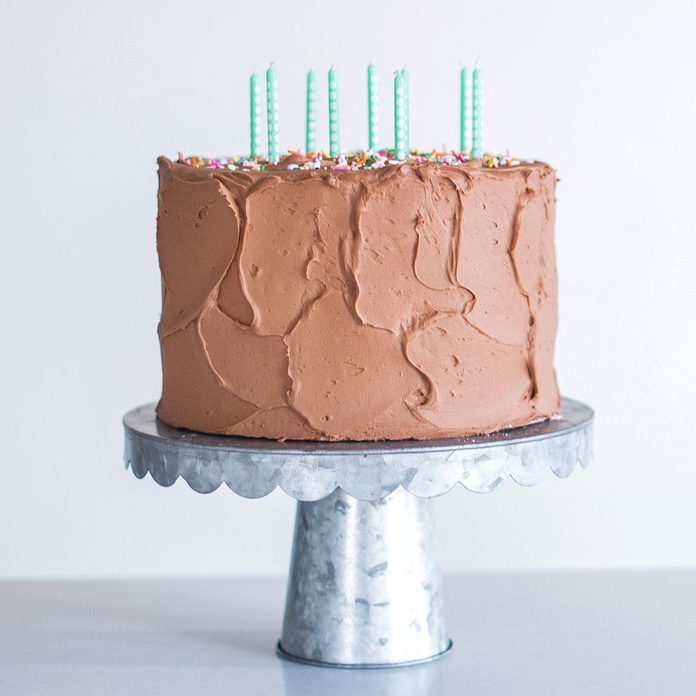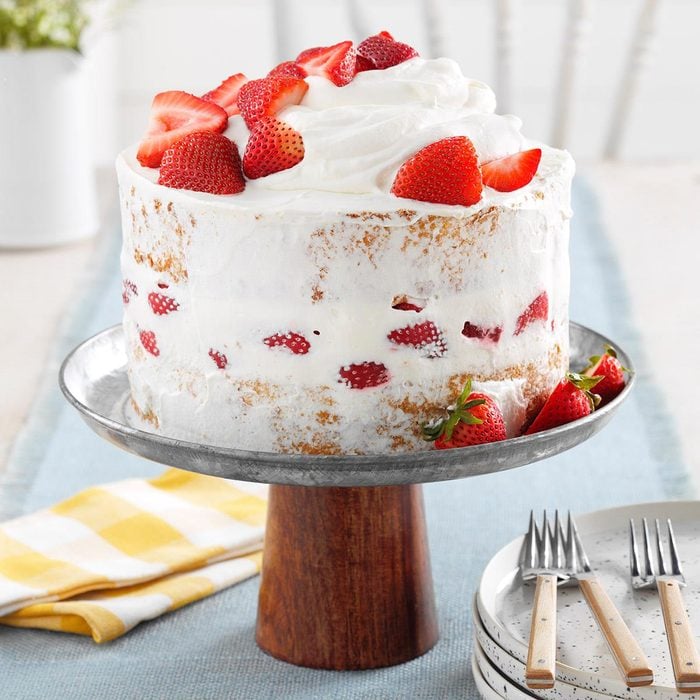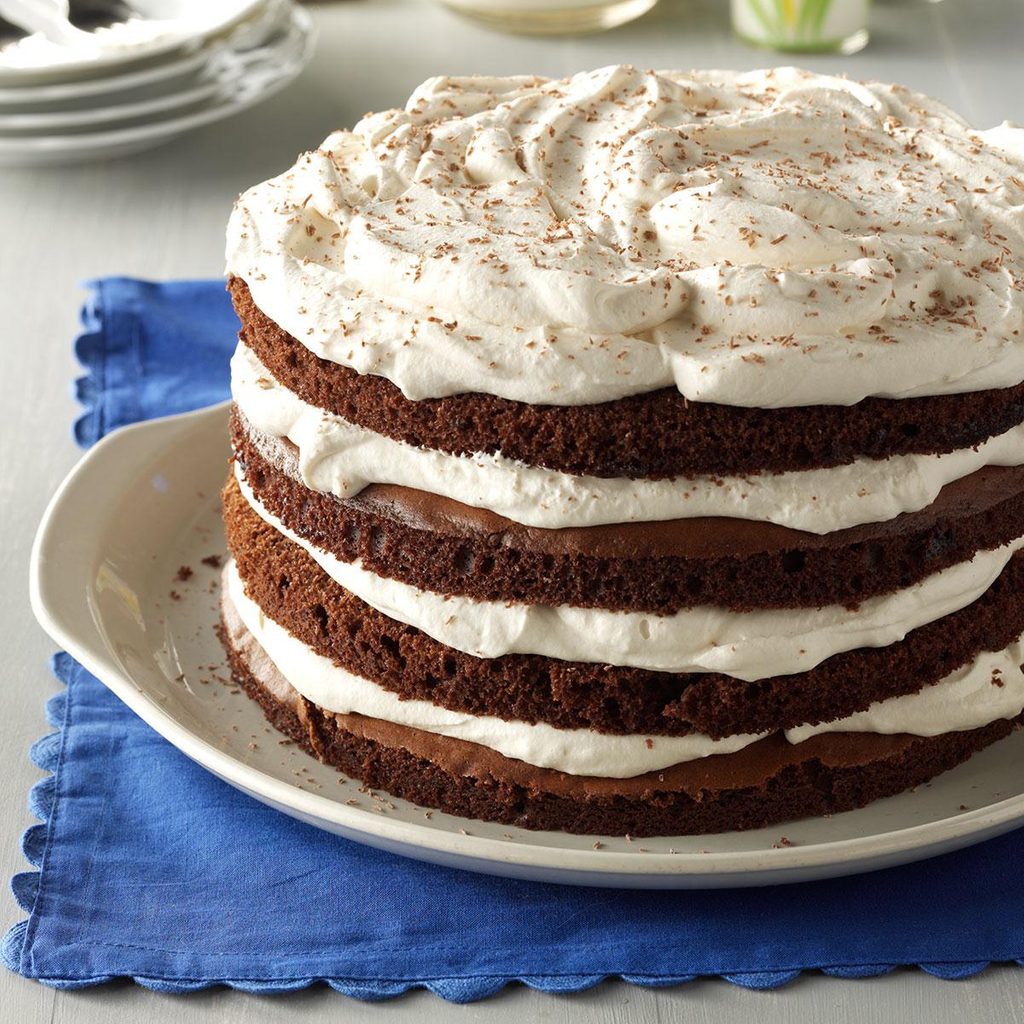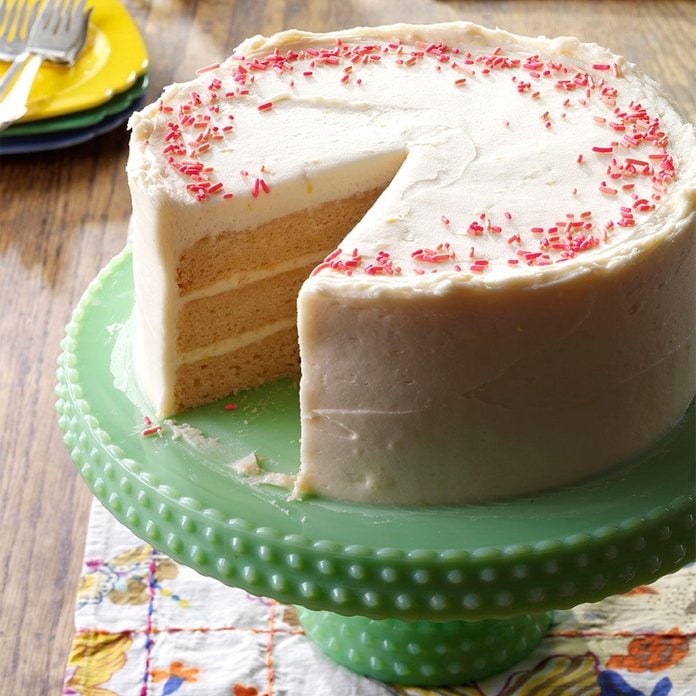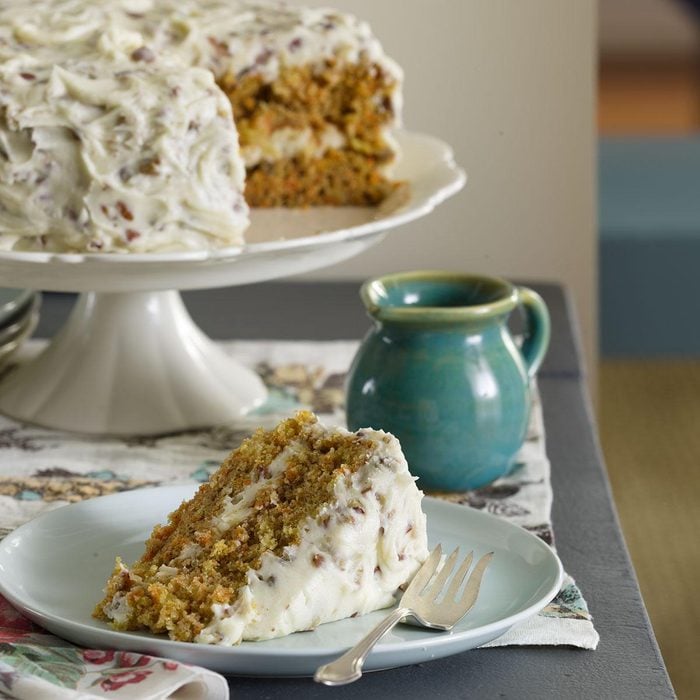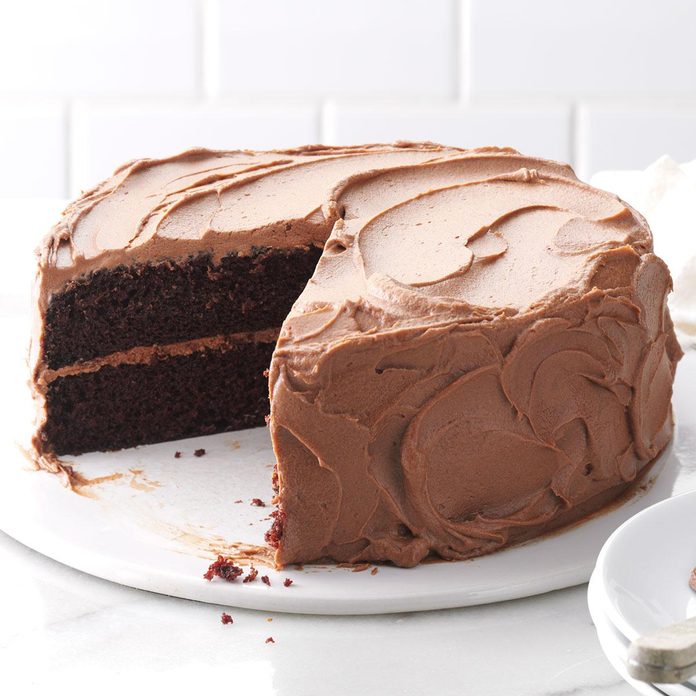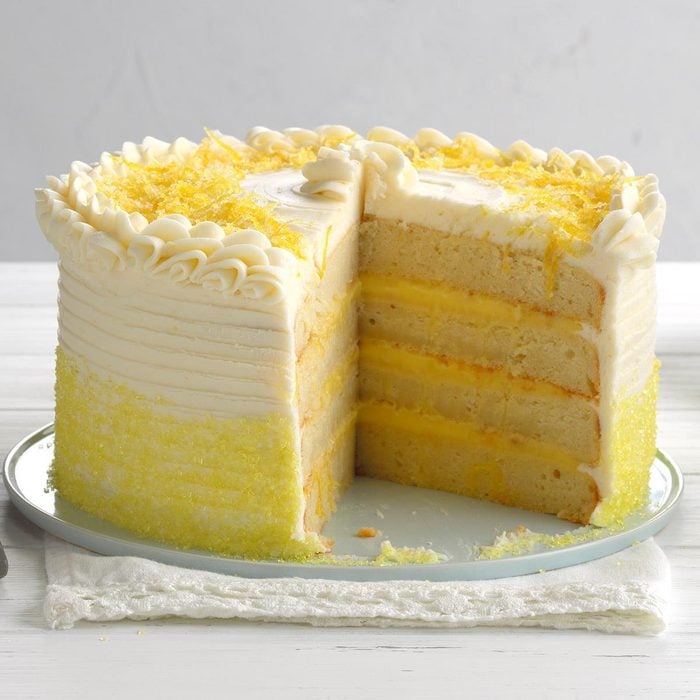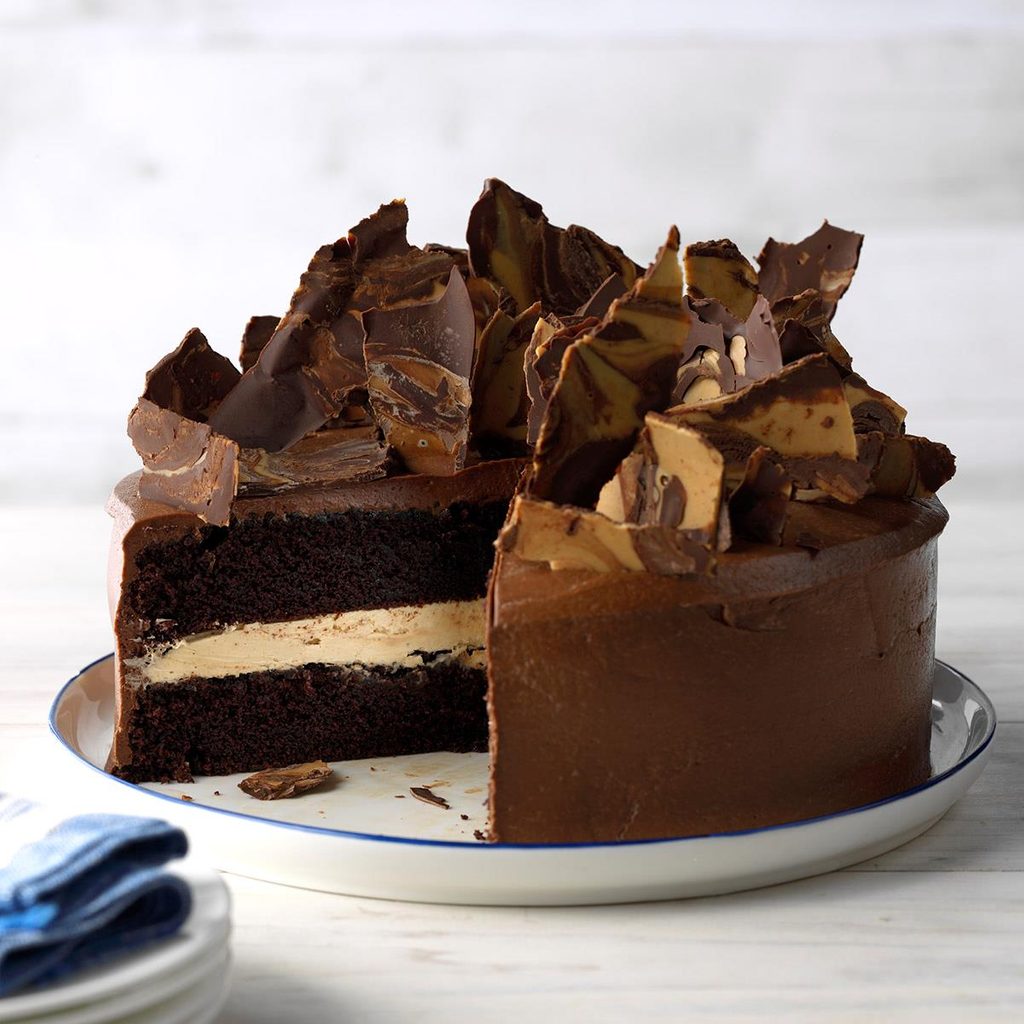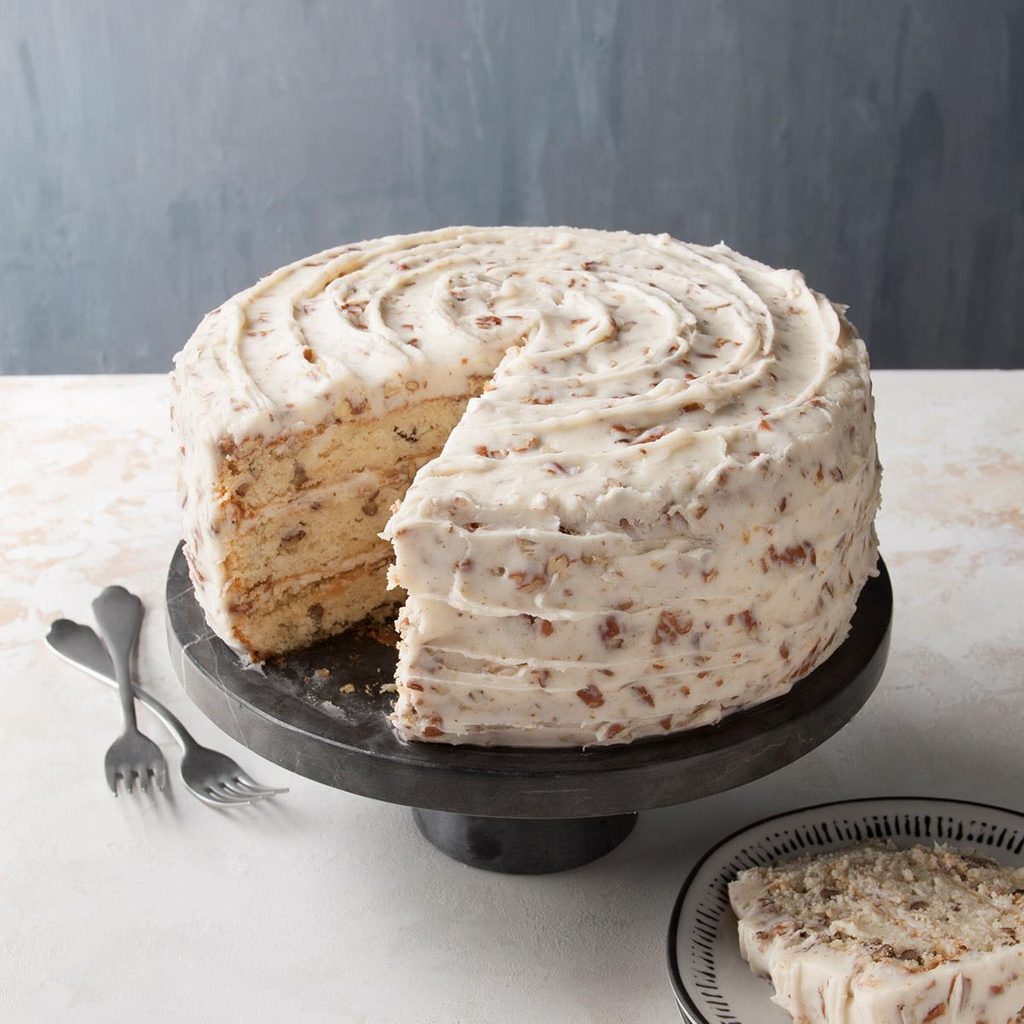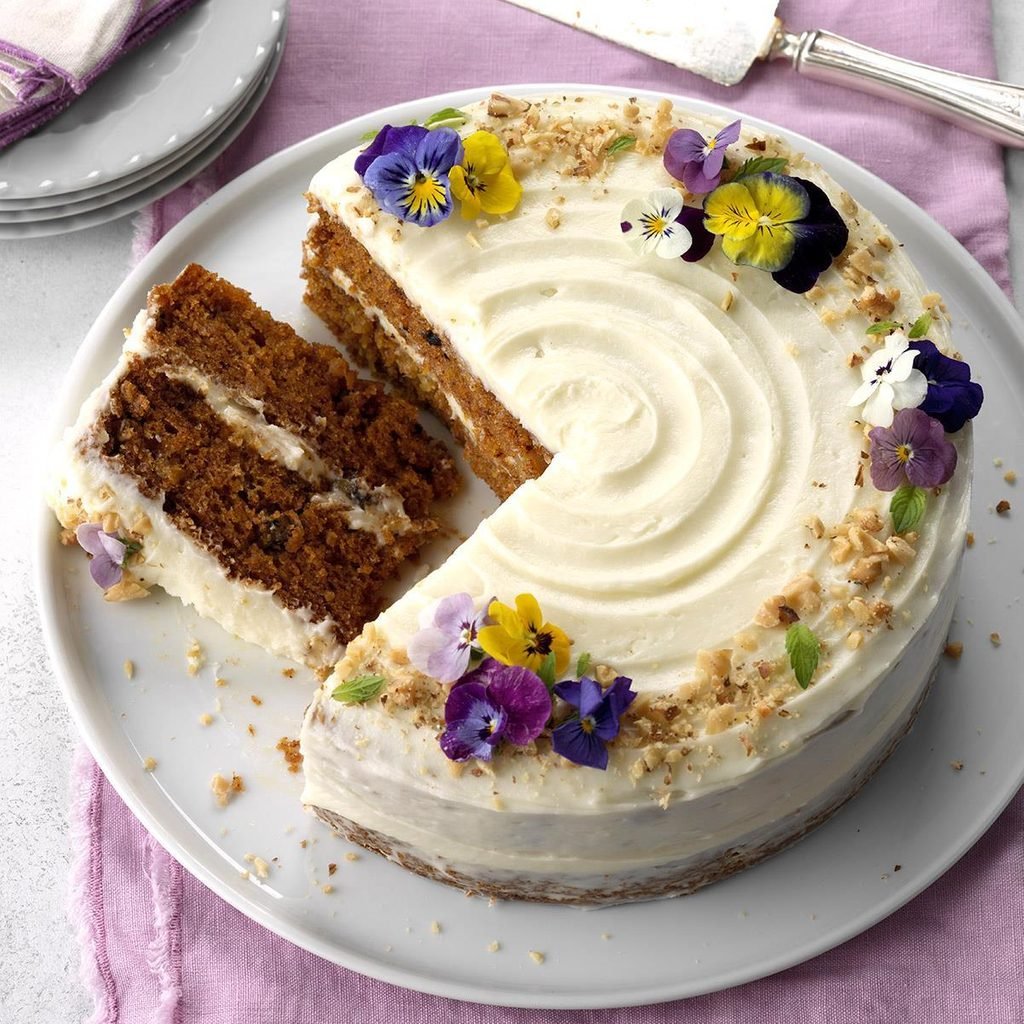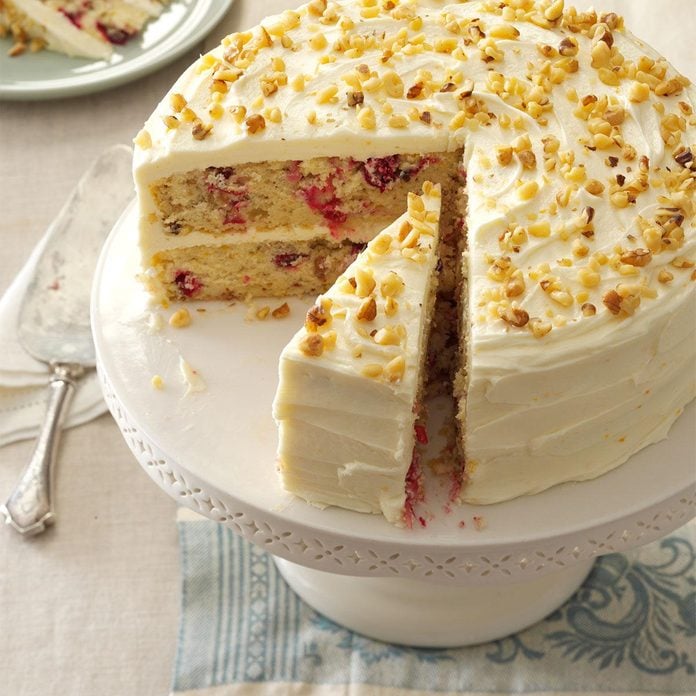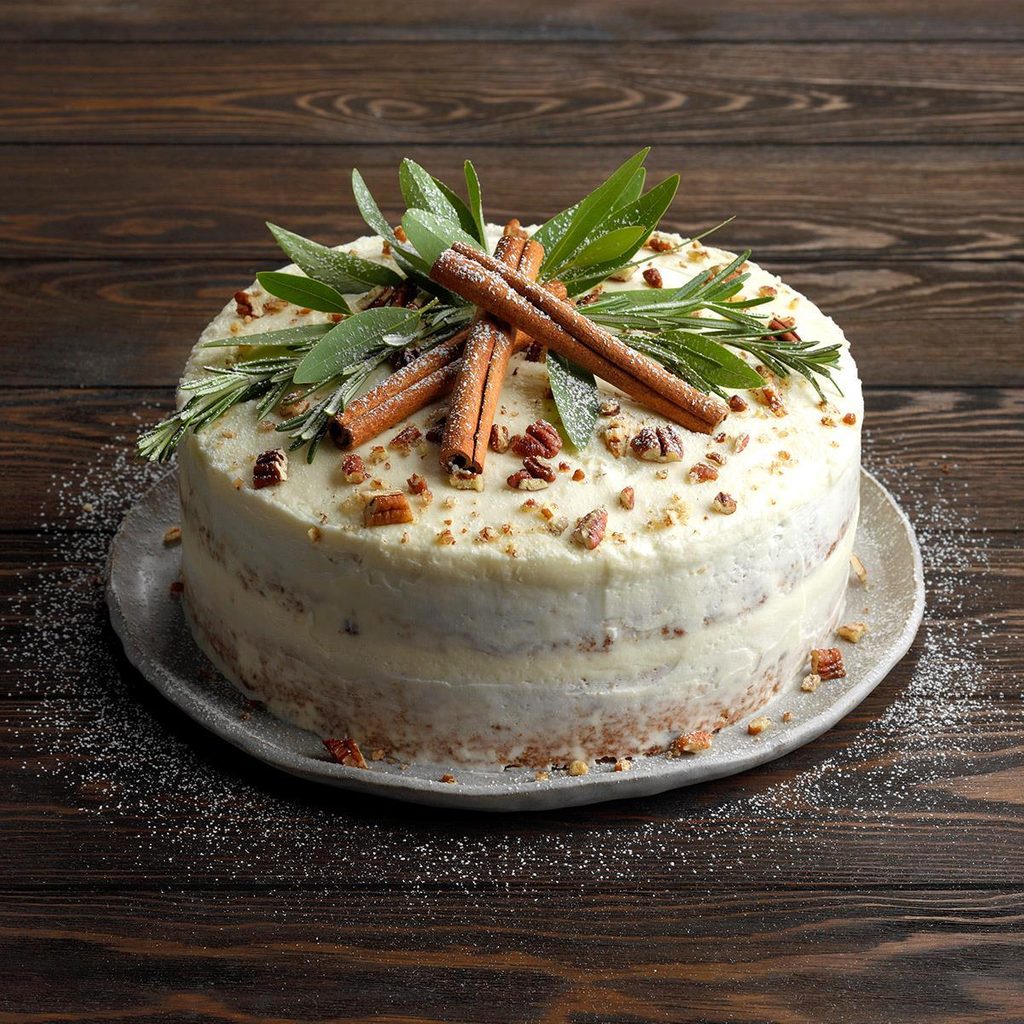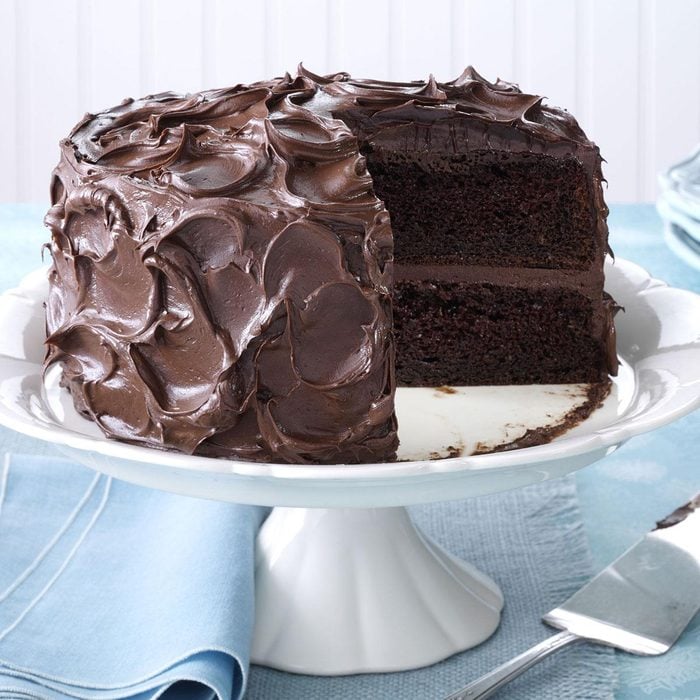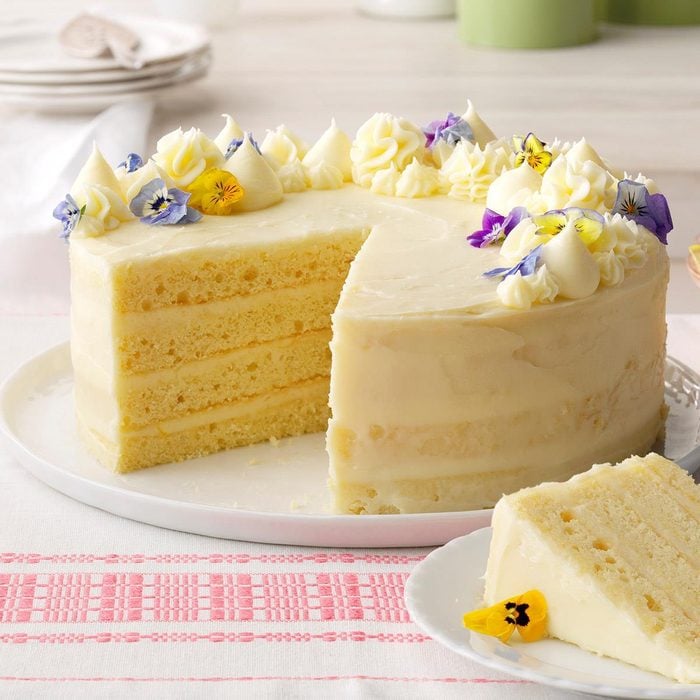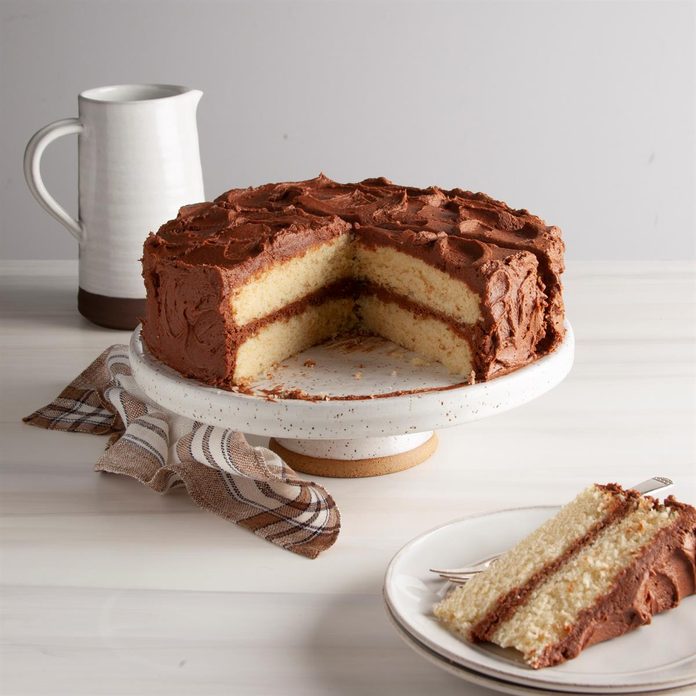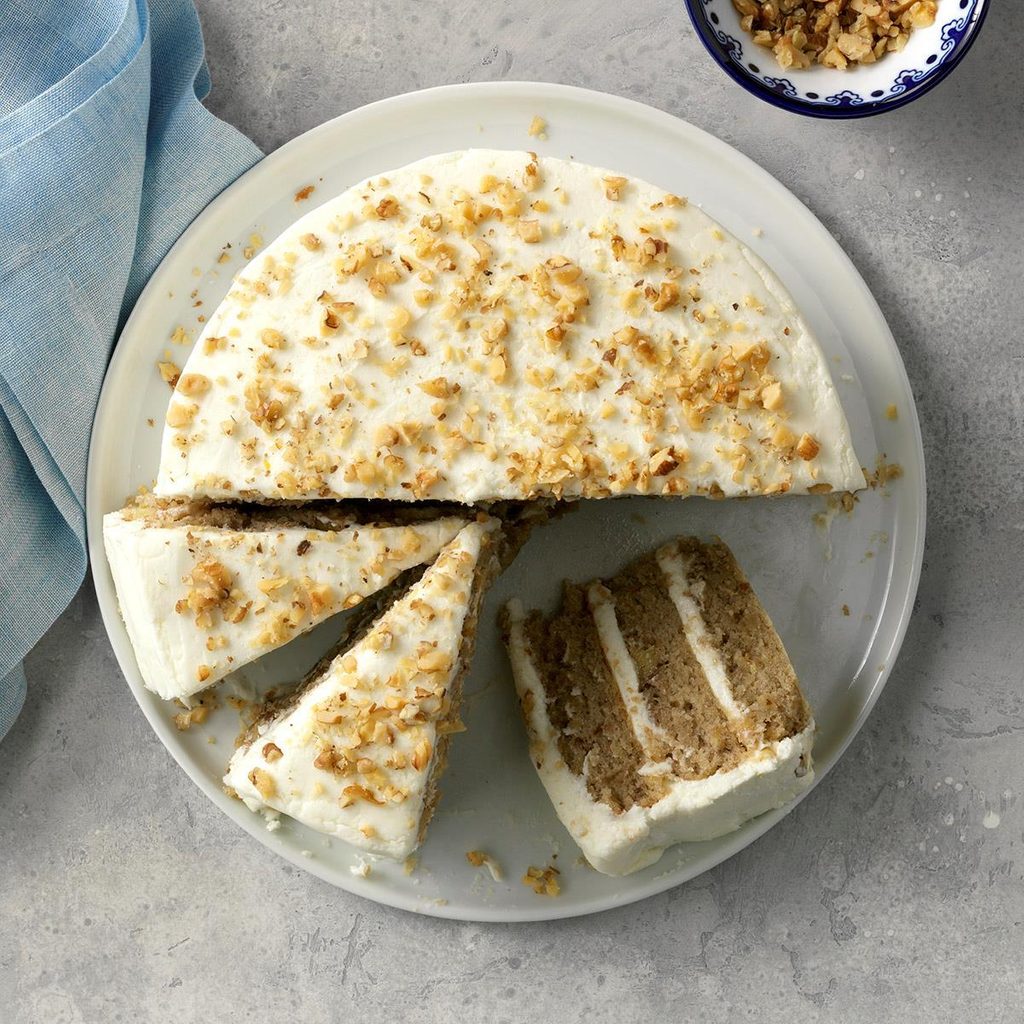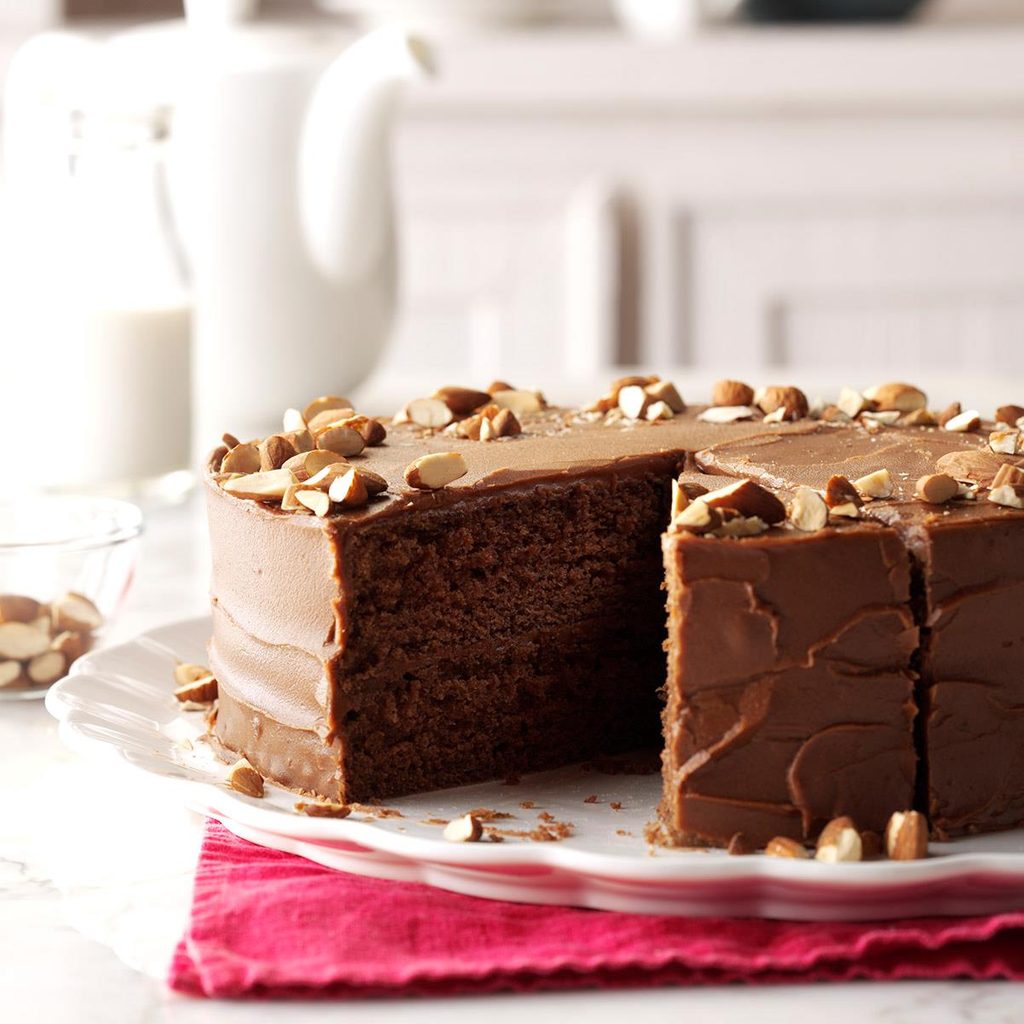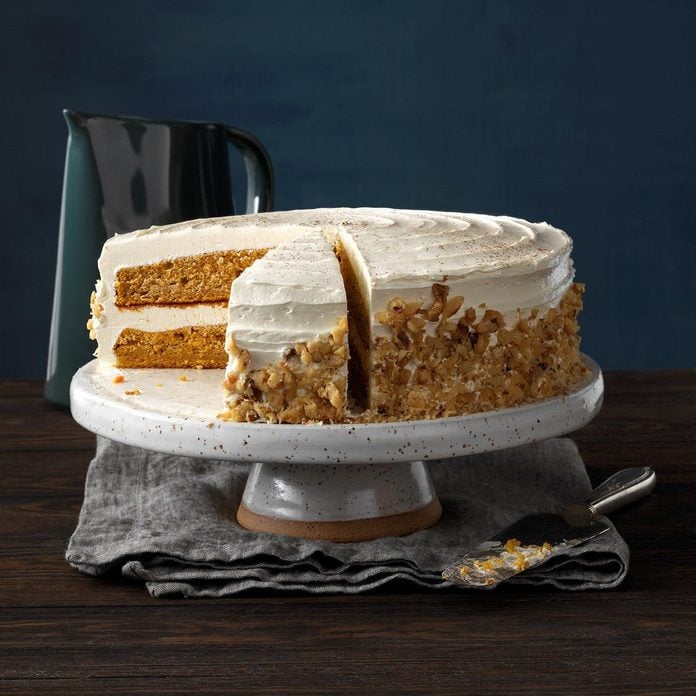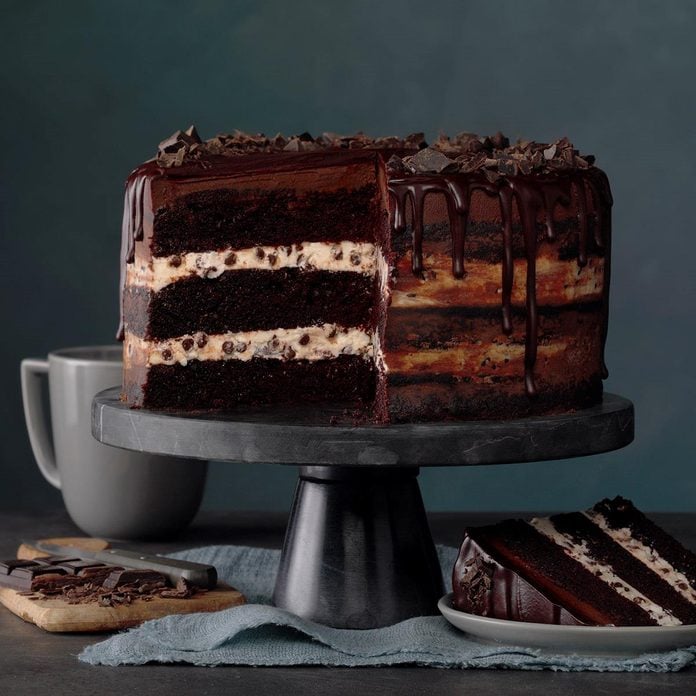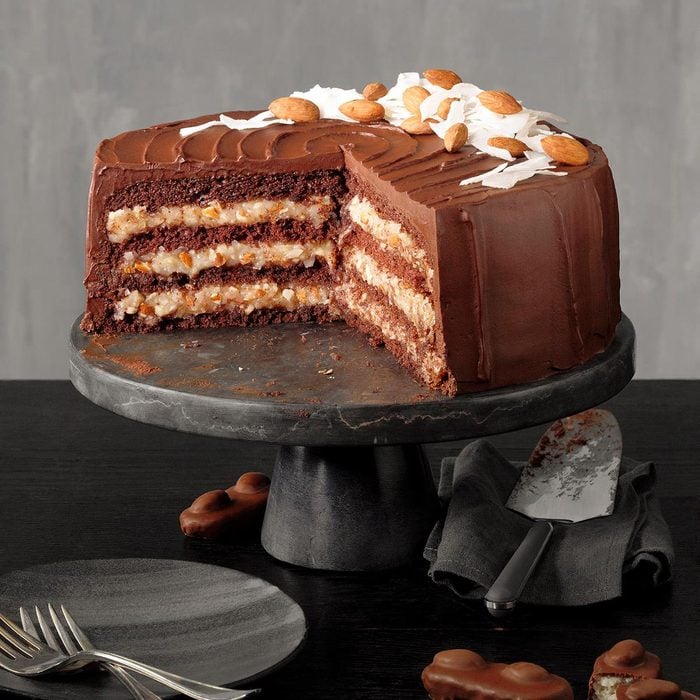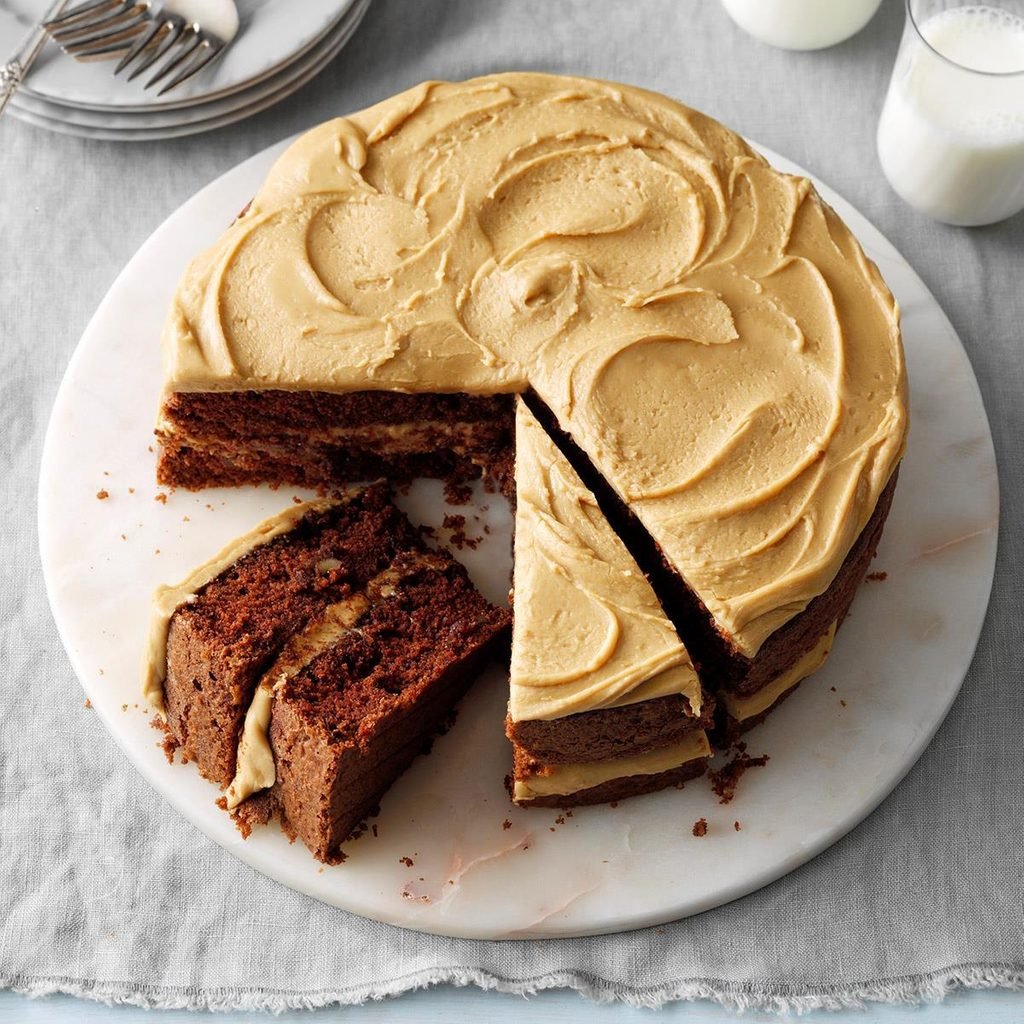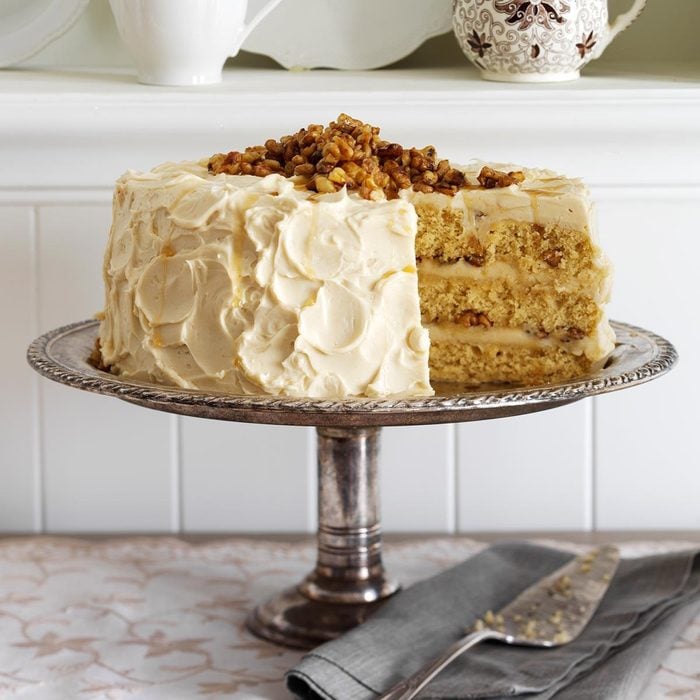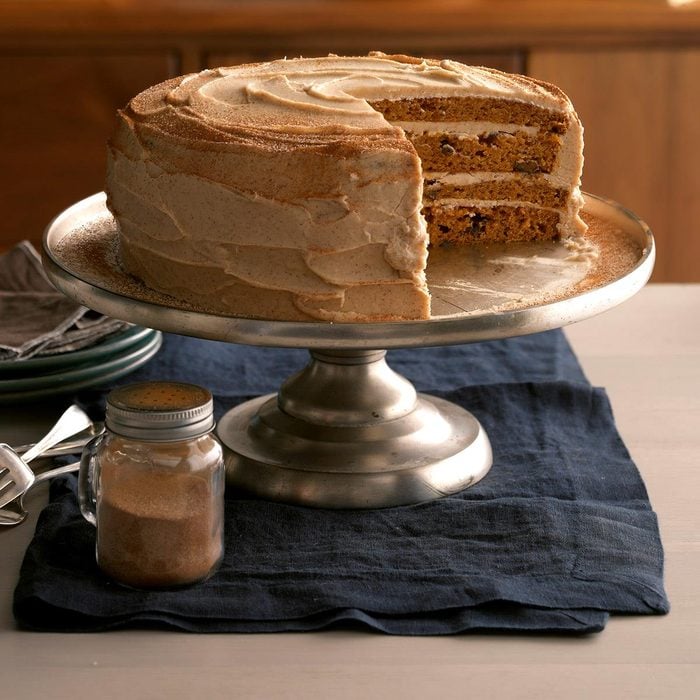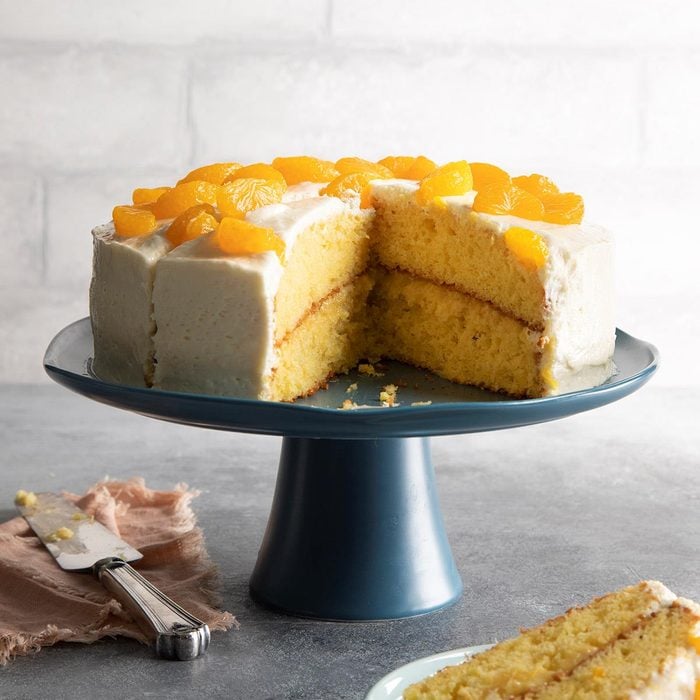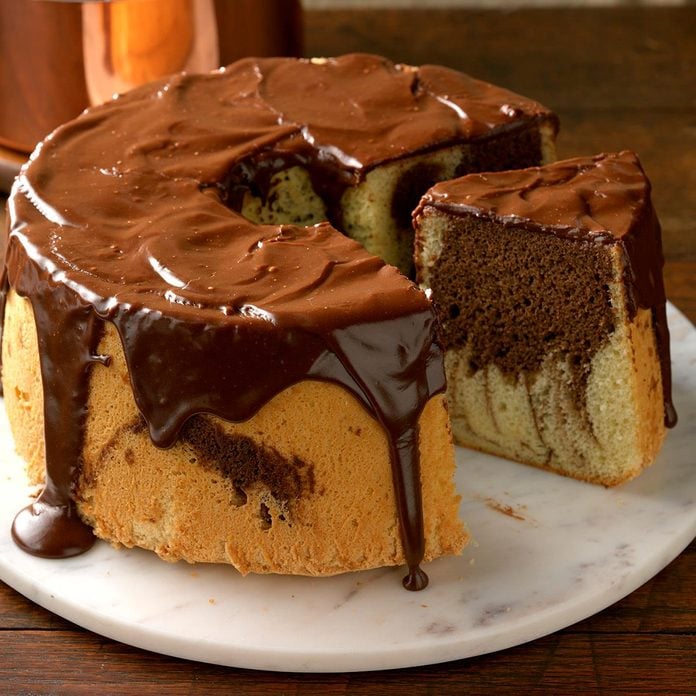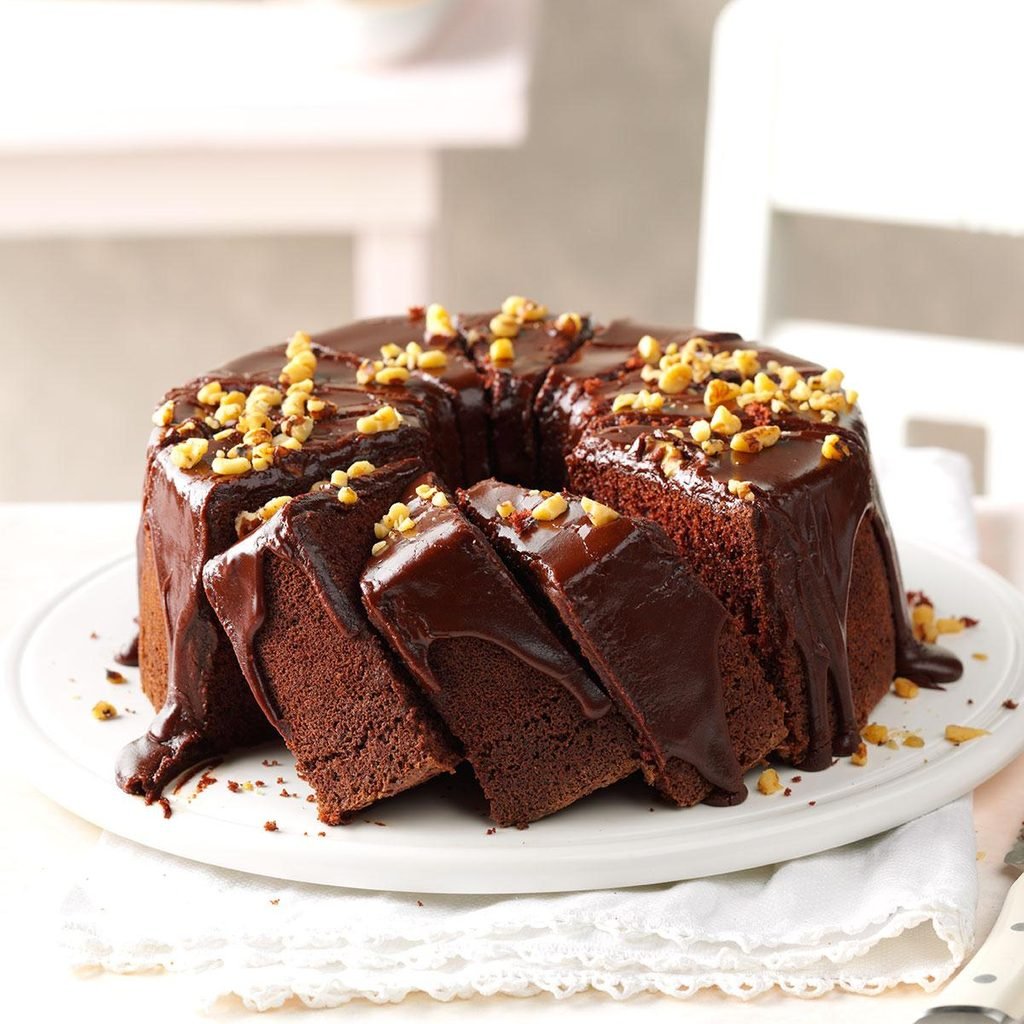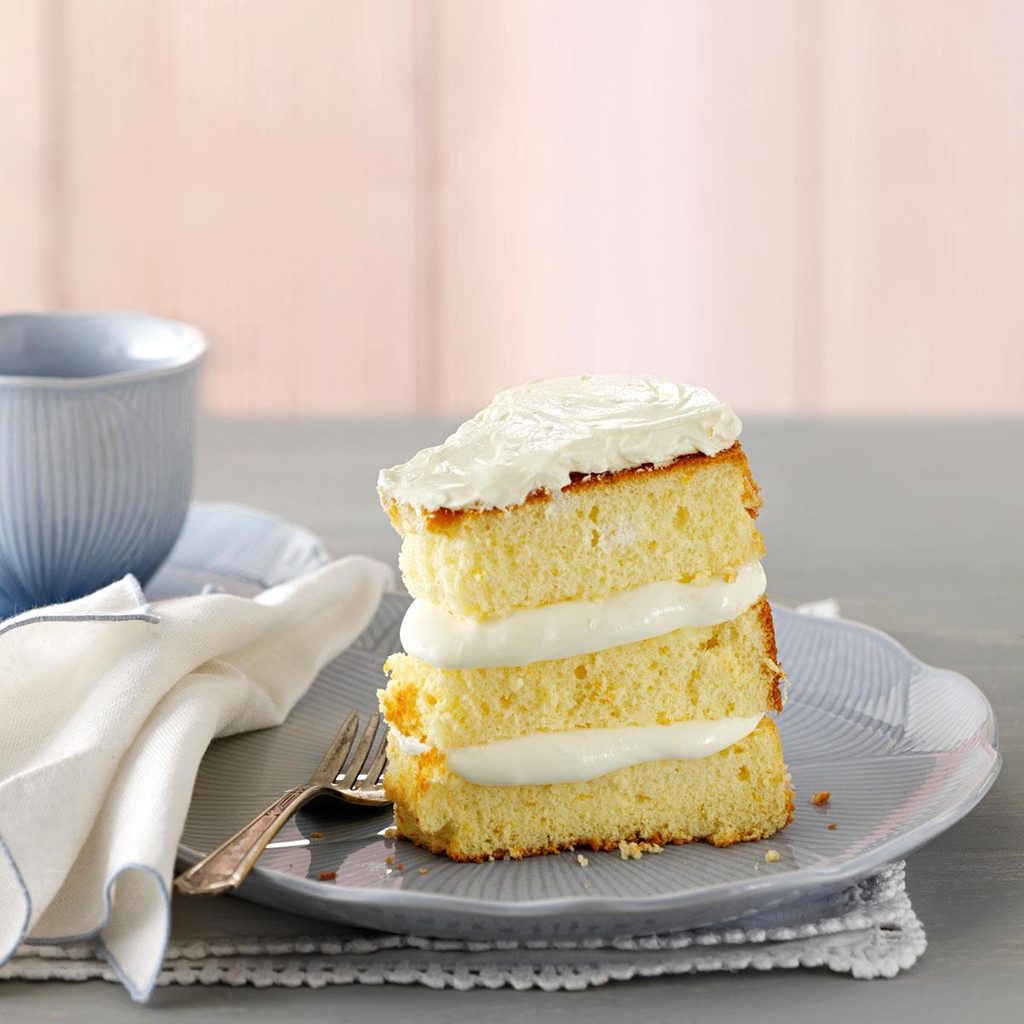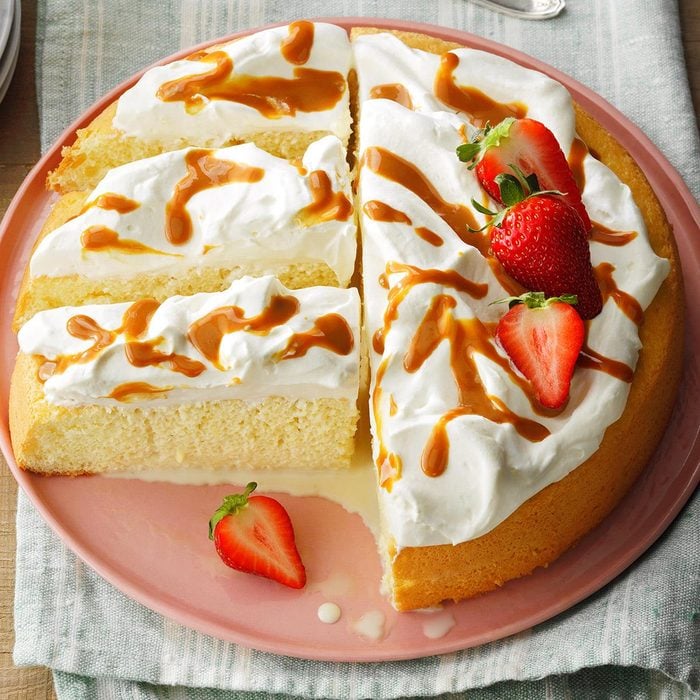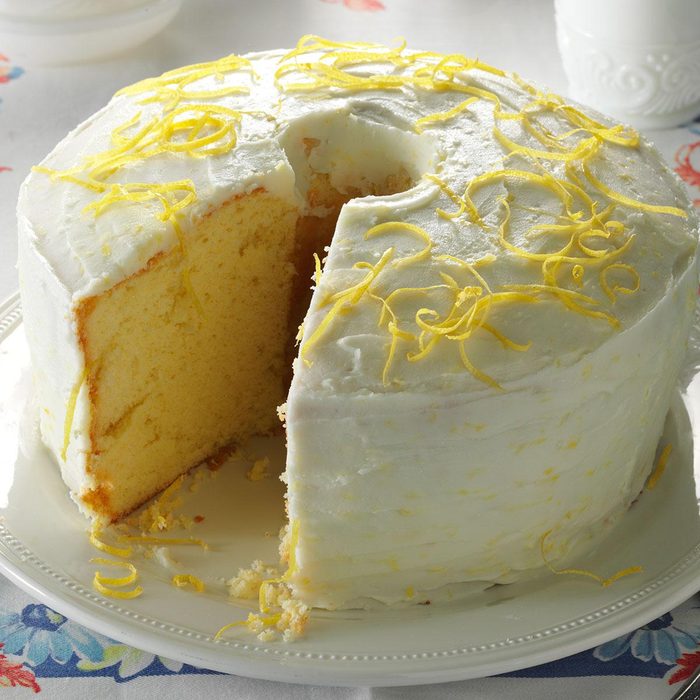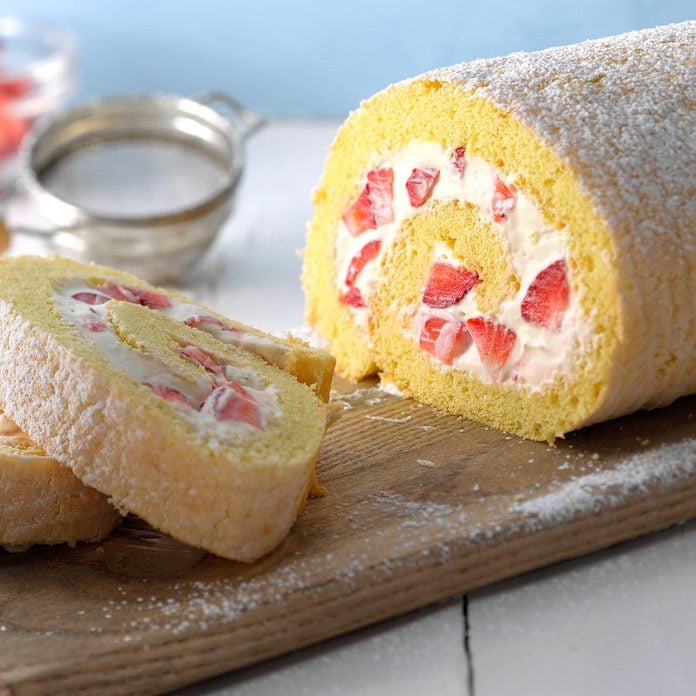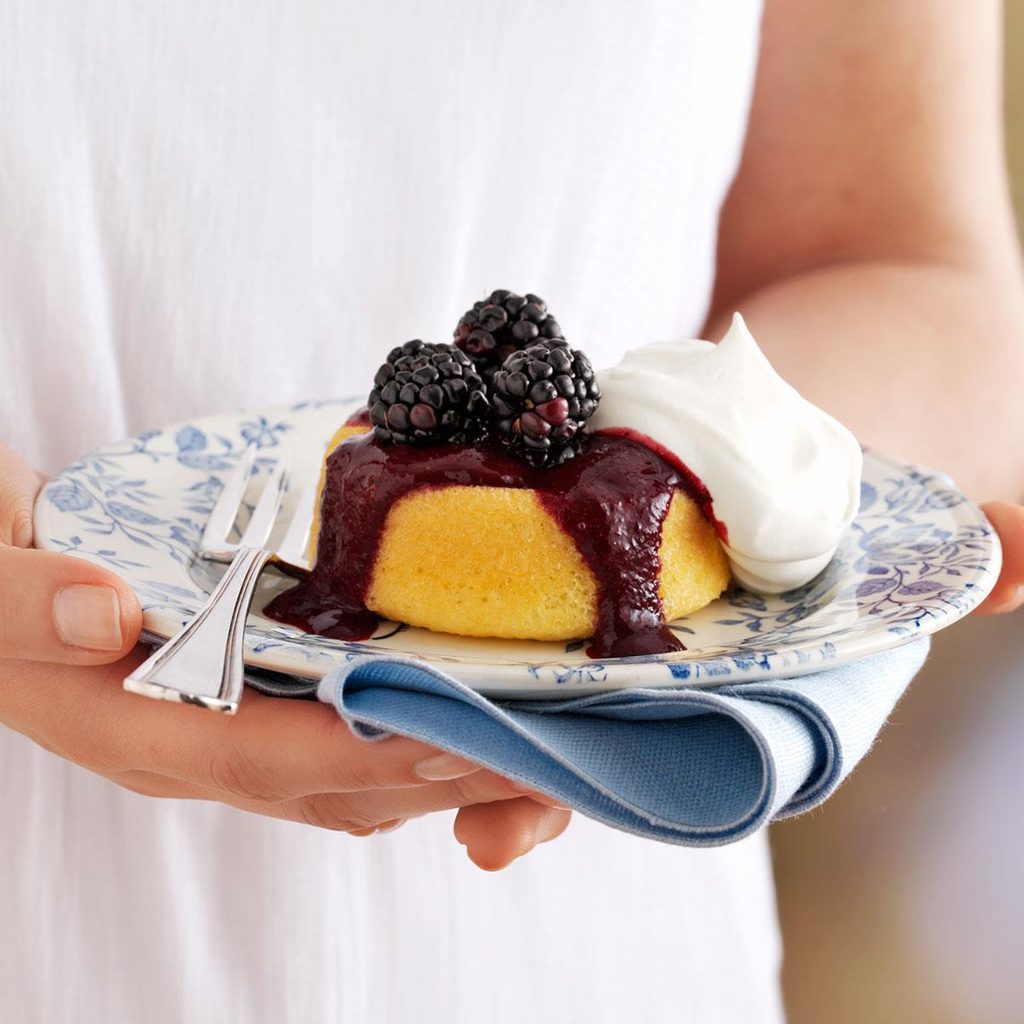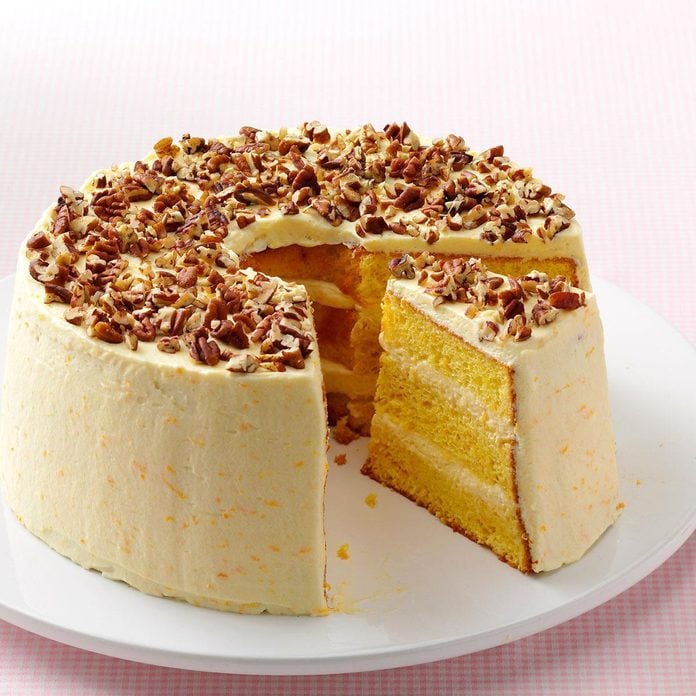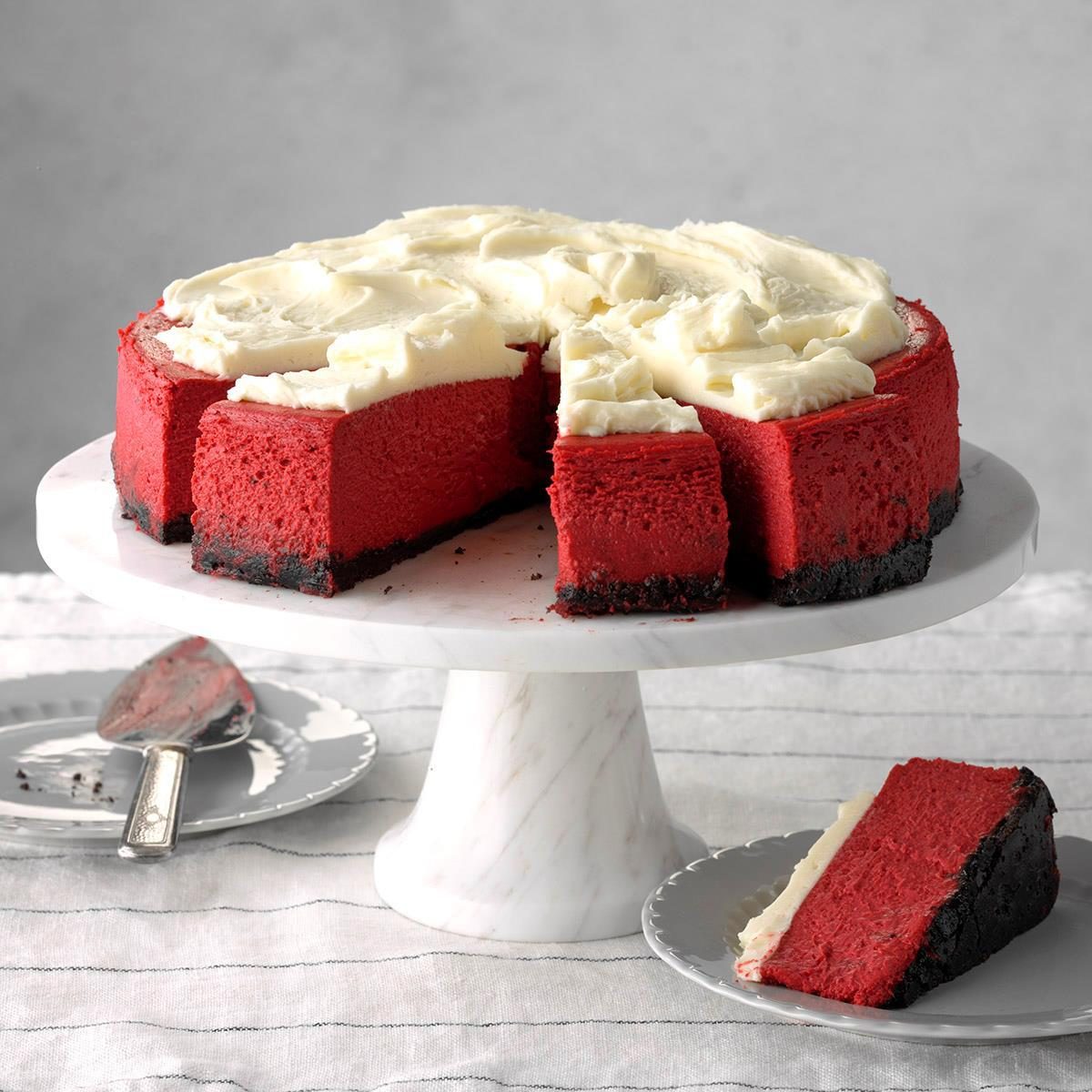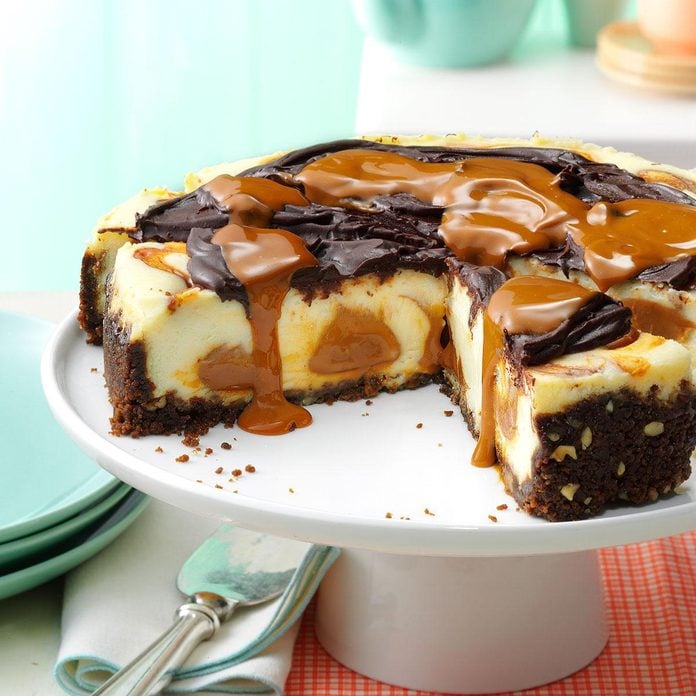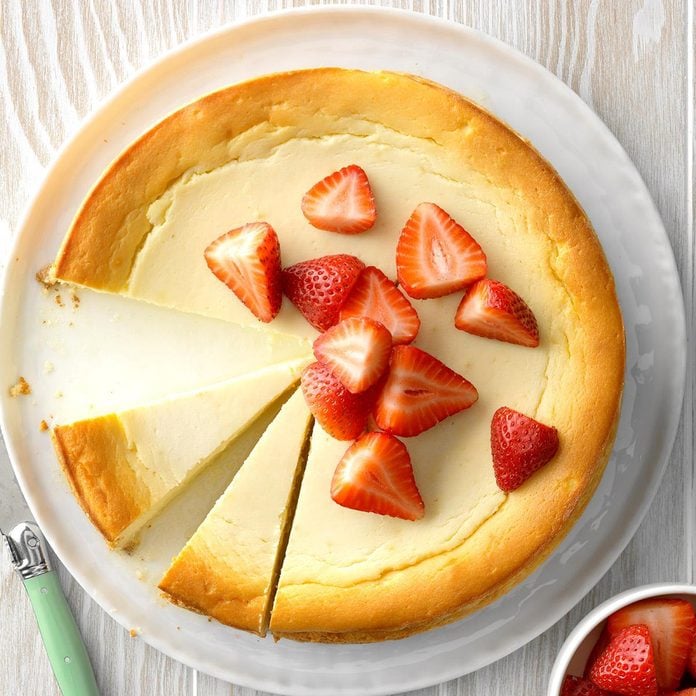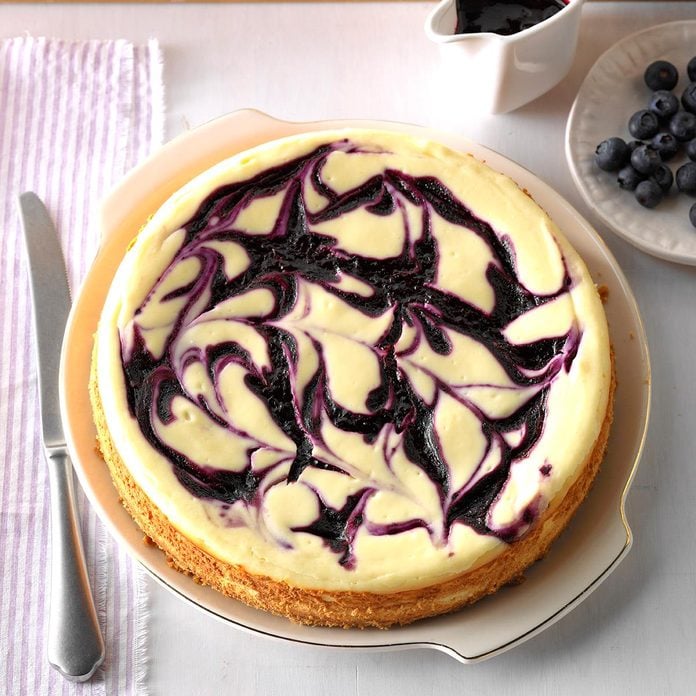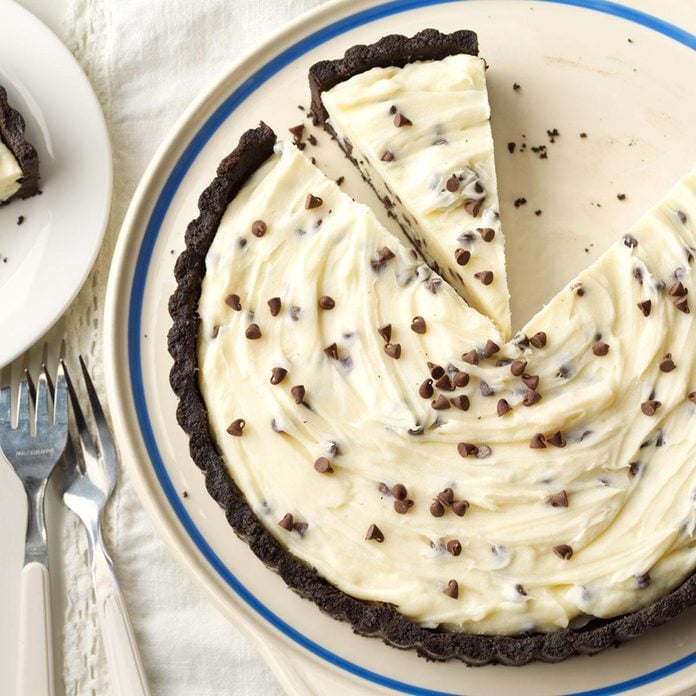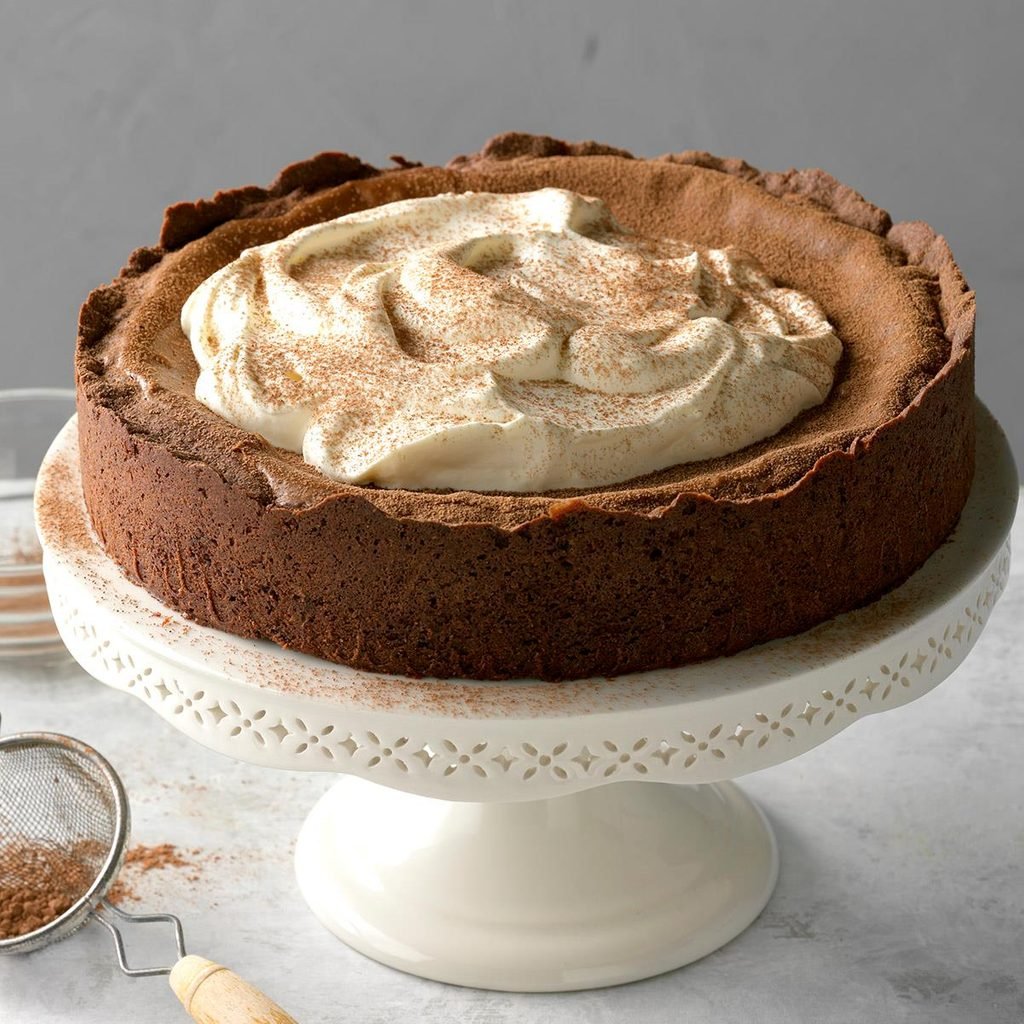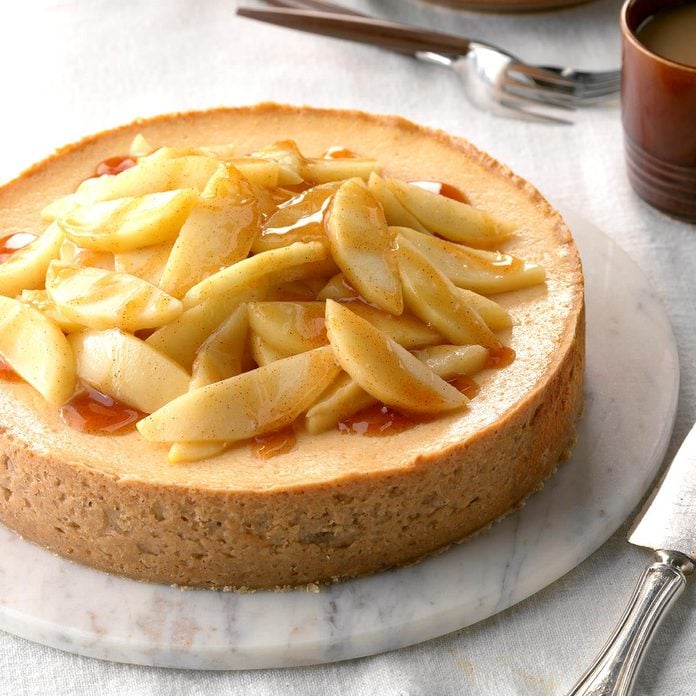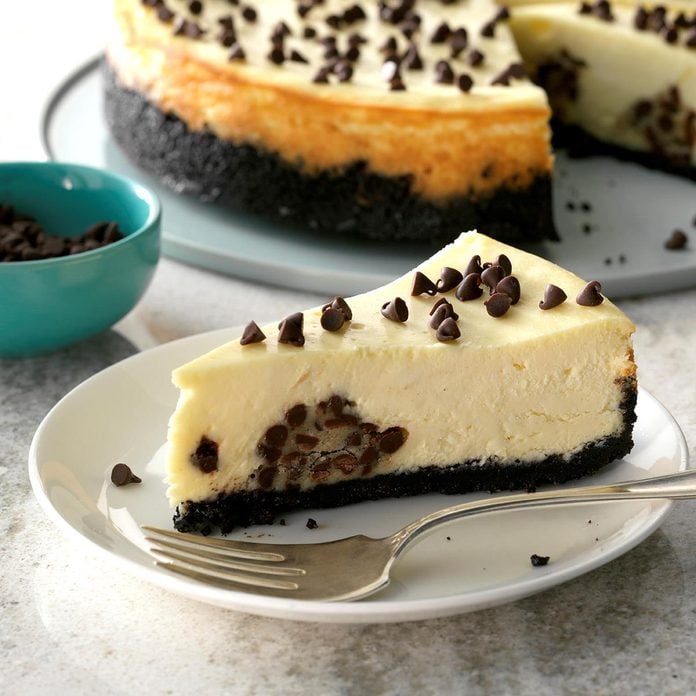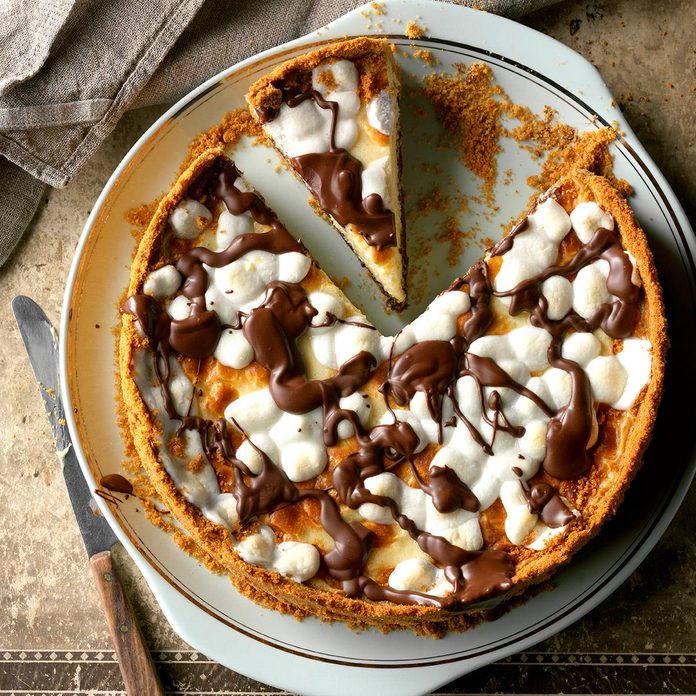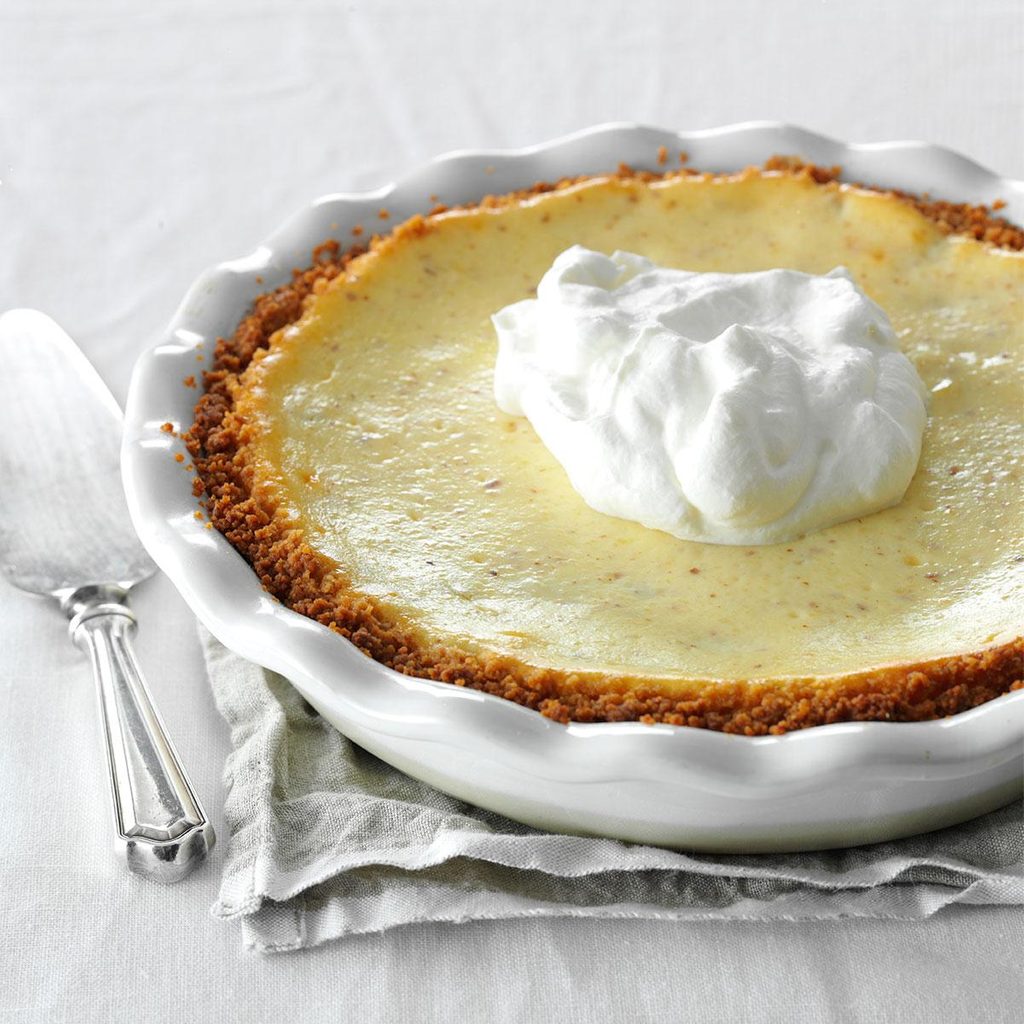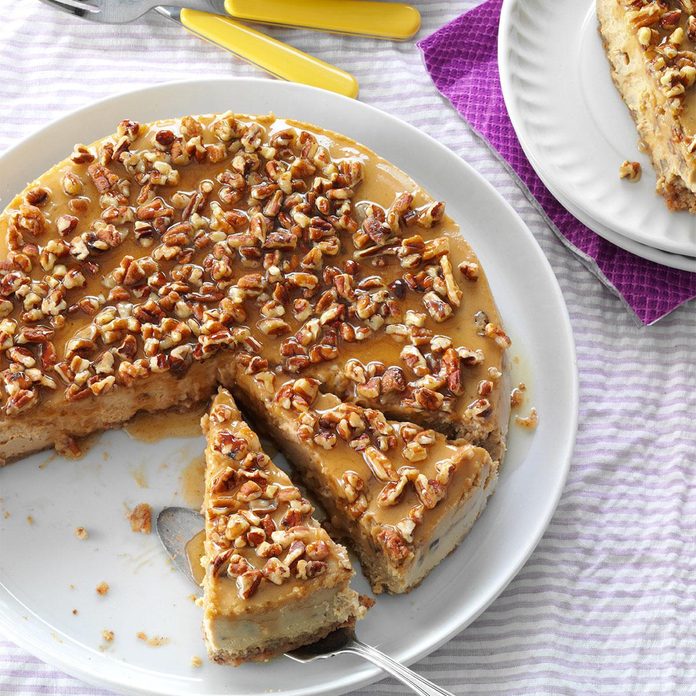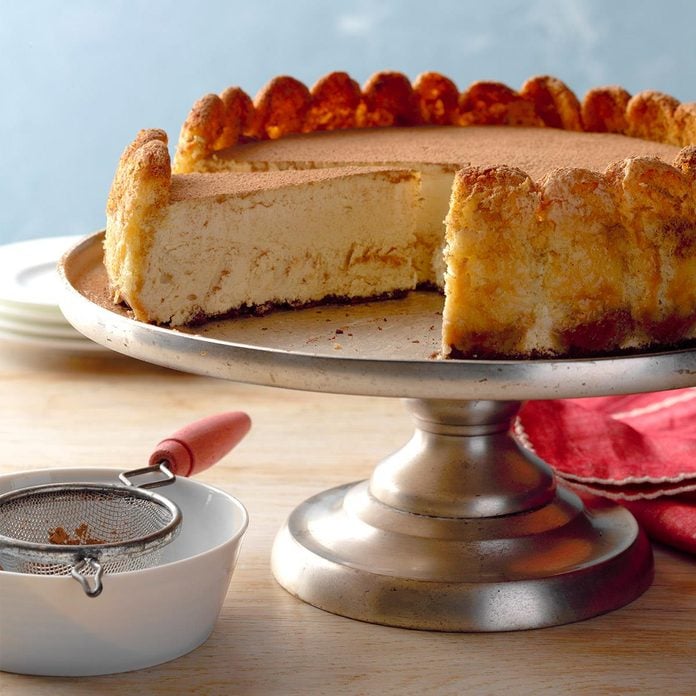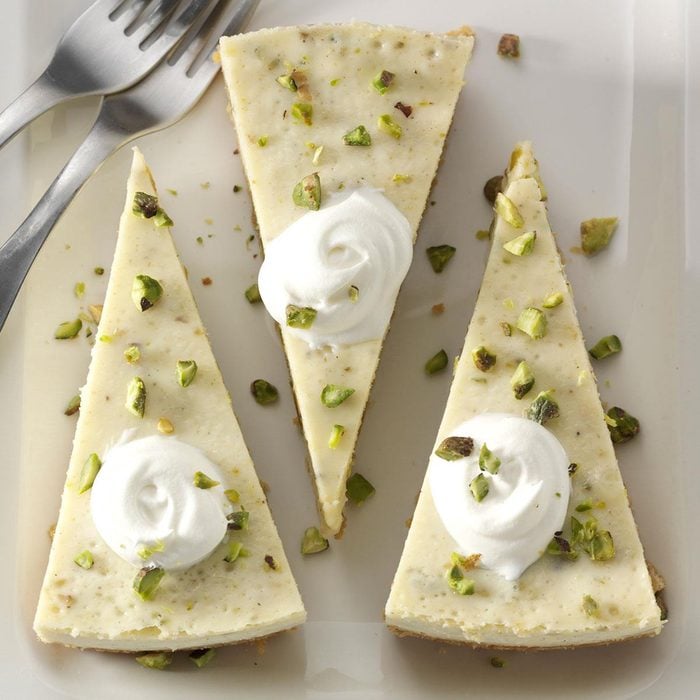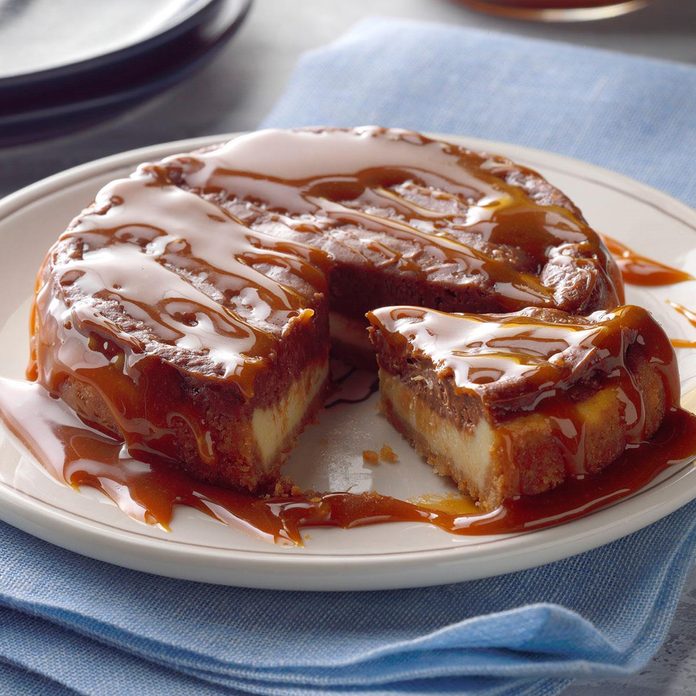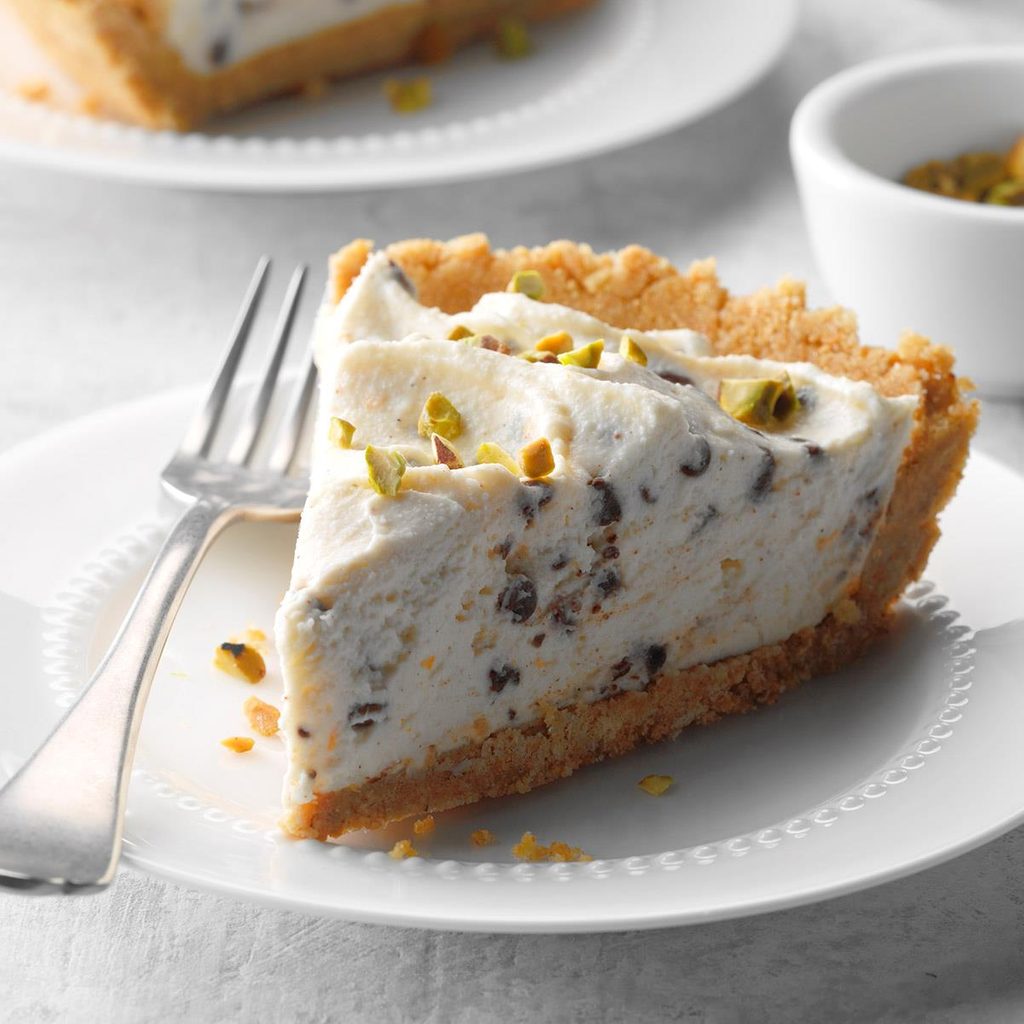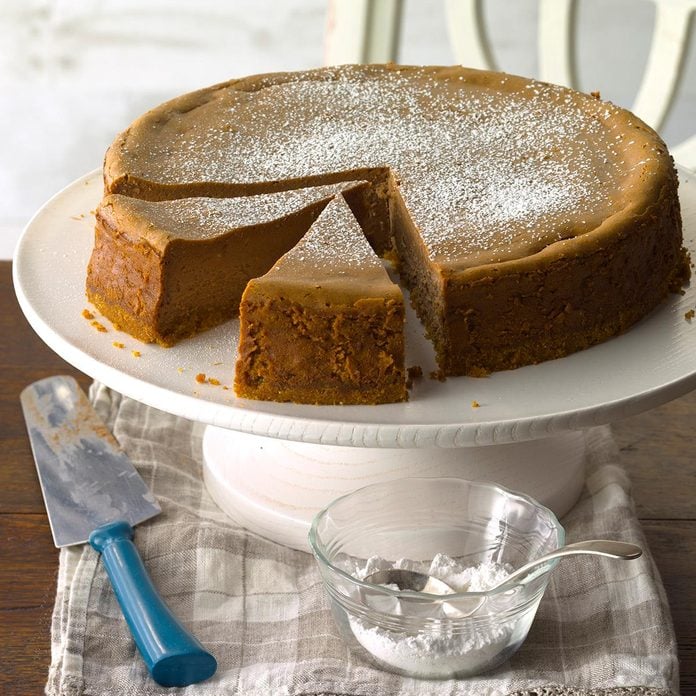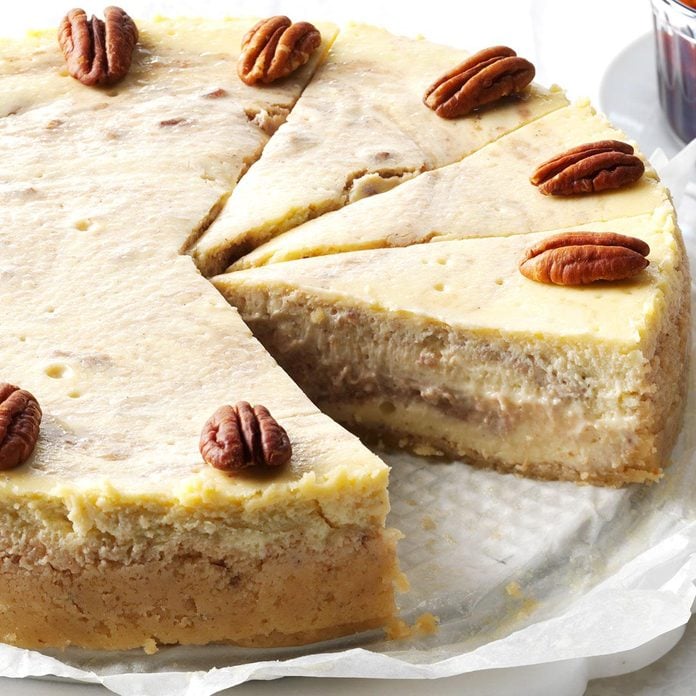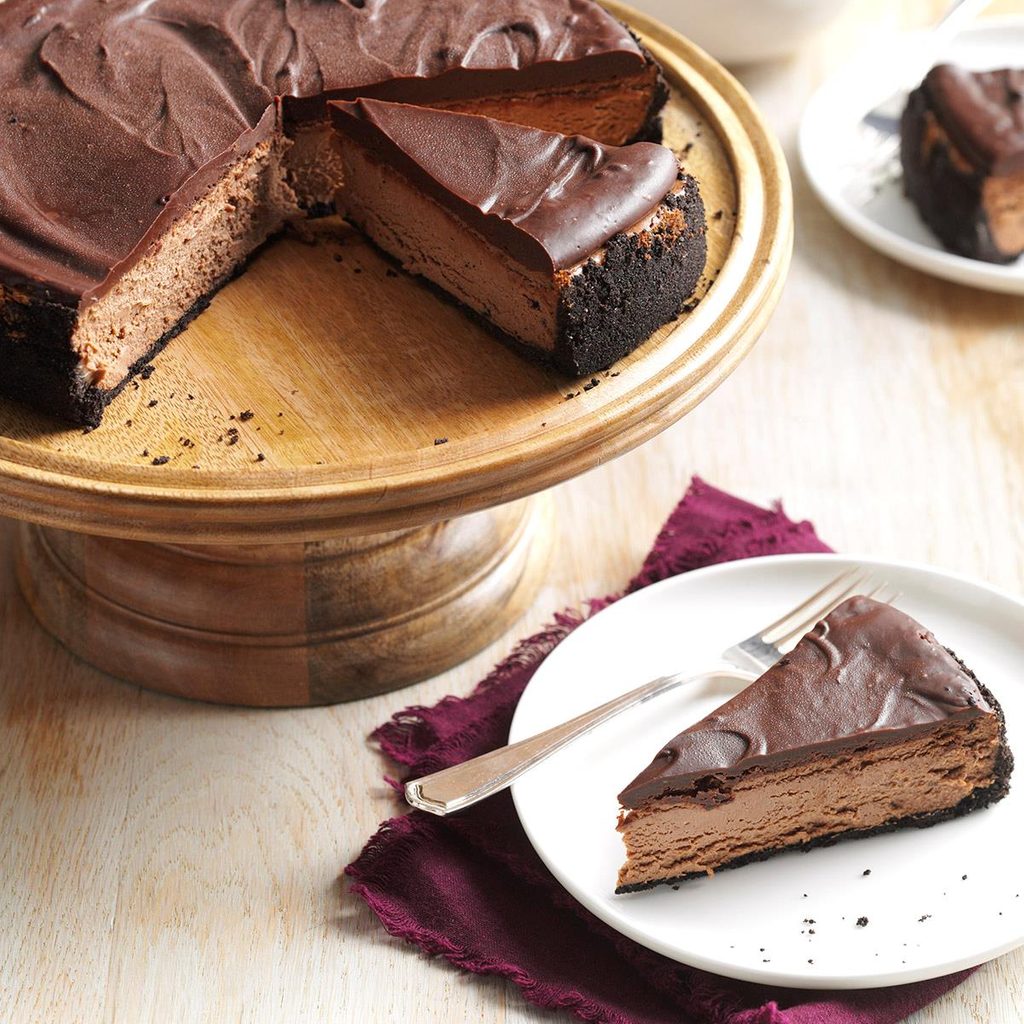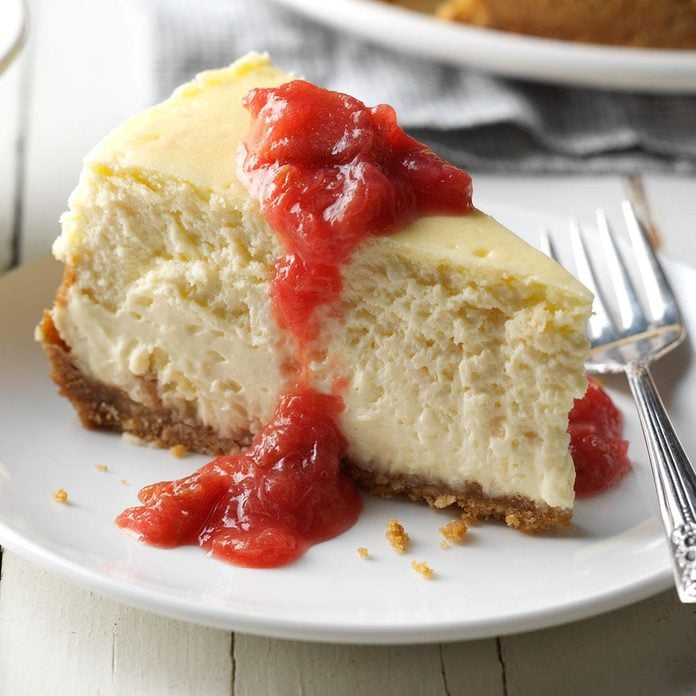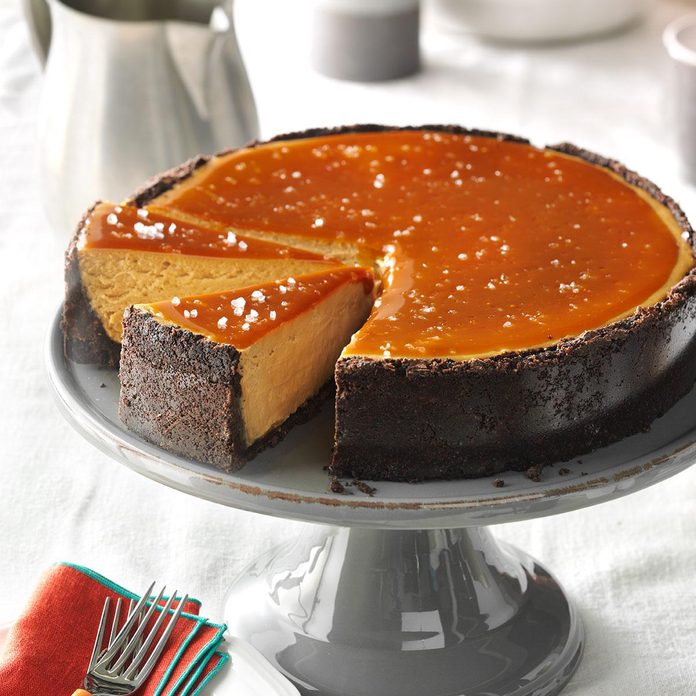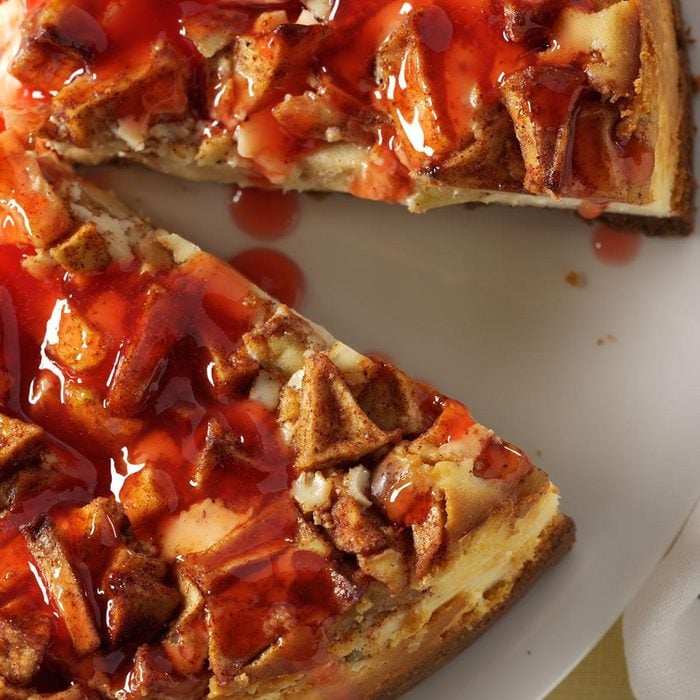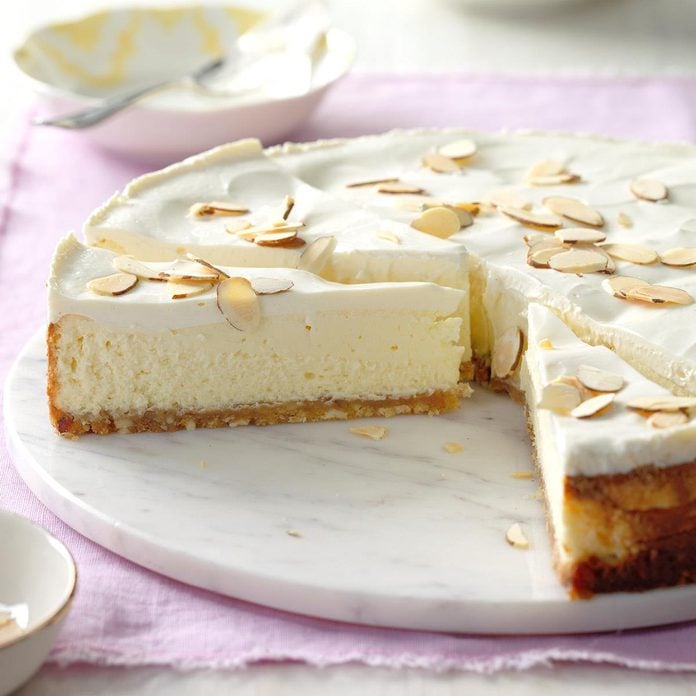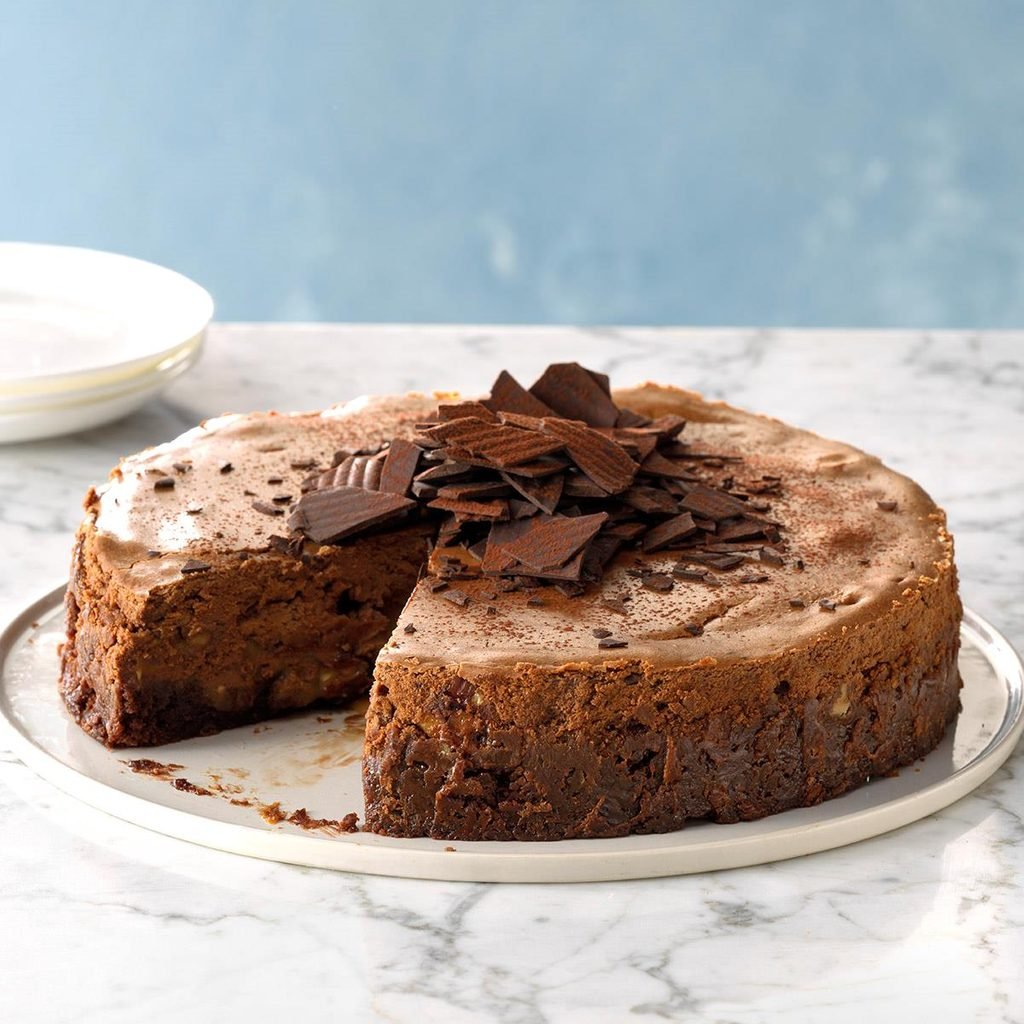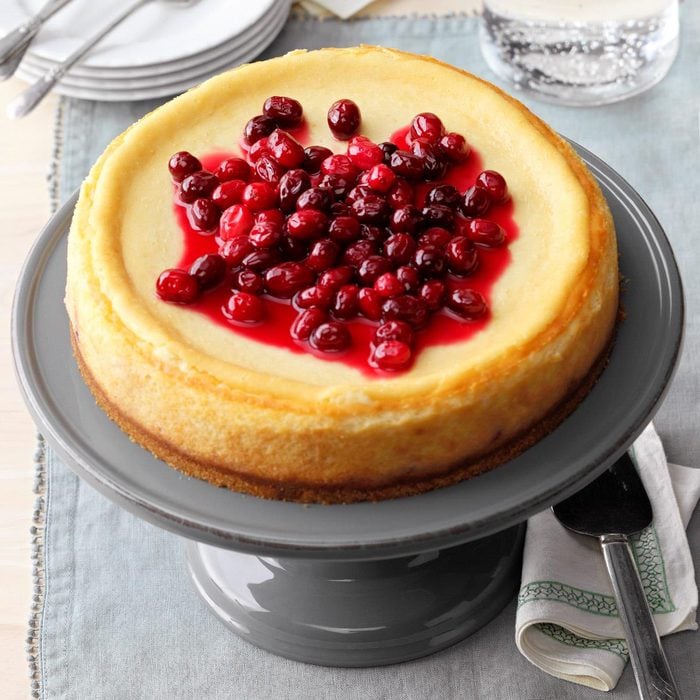ⓘ
If I had to choose only one dessert to enjoy for the rest of my life, it would have to be cake. This sweet treat can be light and airy, dark and decadent, fruity, spongy or smothered in frosting, like this Maple Walnut beaut. As far as I’m concerned, there’s a cake fit for every meal and occasion. And eating a slice (or two!) is easy.
But when it comes to baking a cake, you need to know what you’re doing. Otherwise, you could end up making a whole host of cake mistakes—including the dreaded overbake. (Or underbake—nobody likes a soggy bottom!)
Today, we’re going to show you three foolproof methods for testing cake doneness. These tips will ensure your treats turn out perfect every single time.
How to Test a Layer Cake
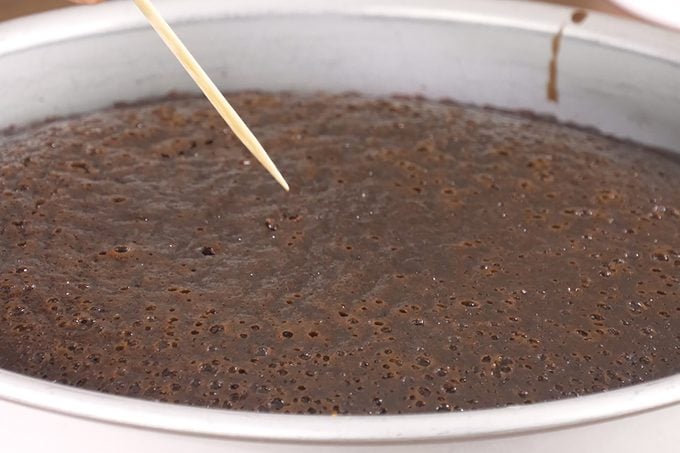
If you’re a frequent cake baker, this is likely your go-to method for testing doneness. You’ll need a toothpick, a metal tester ($8) or—in a pinch—even a strand of uncooked spaghetti.
As your cake nears the finish line, give it a poke in the center with your tester of choice. If the tester comes out with crumbs or wet batter, the cake needs more time to bake. But if the tester comes out clean, your cake is ready to pull from the oven.
Another way to check for doneness is to pay attention to the cake’s edges. The batter will begin to pull away from the pan as it finishes baking.
Our Favorite Layer Cake Recipes
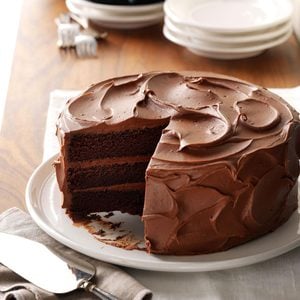 Taste of Home
Taste of Home
Years ago, I drove 4-1/2 hours to a cake contest, holding my entry on my lap the whole way. But it paid off. One bite and you'll see why this velvety beauty was named the
best chocolate cake recipe won first prize. —Sandra Johnson, Tioga, Pennsylvania
Coconut Chiffon CakeToasted coconut adds visual appeal to this tall and impressive cake. With an airy texture and heavenly coconut-ginger flavor,it's a lovely end to meals throughout the year.
Mocha CakeWithout a doubt, this is the best cake I've ever made. I share this decadent mocha cake with everyone I can! —Katherine DeLoach, Visalia, California
Vanilla Cake with Vanilla Buttercream FrostingIndulge in this layer cake topped with rich buttercream—a vanilla lover's dream. I use pure vanilla extract for the best flavor. —Michelle Dorsey, Wilmington, Delaware
Raspberry Lemon CakeWant a change from chocolate cake? Try this elegant lemon raspberry cake packed with refreshing citrus flavor, from the cake to the homemade lemon curd and creamy frosting. It won a blue ribbon at the Alaska State Fair and it's definitely a winner with me. —Shirley Warren, Thiensville, Wisconsin
Majestic Pecan CakeThis recipe truly lives up to its name. The pecan-dotted cake is stacked in three layers, and made-from-scratch frosting is the crowning touch.—Karen R. Jones, Claypool, Indiana
Banana Pudding CakeI love to make cakes, and my family loves banana pudding. One day while brainstorming in the kitchen, I came up with this banana pudding cake recipe to combine the two. My family and friends can't get enough of it! If you are pressed for time, you may substitute whipped topping for the homemade sweetened whipped cream. —Tiffany Barbee, Rocky Mount, North Carolina
Malted Chocolate & Stout Layer CakeIf you want a
St. Patrick's Day dessert that will take the cake, look no further! The rich chocolate cake is incredibly moist and has a nice malt flavor that's perfectly complemented by the Irish cream frosting. —Jennifer Wayland, Morris Plains, New Jersey
When assembling a layer cake, you'll want to follow these tips for
torting a cake.
Best Red Velvet CakeIt's just not Christmas at our house until this festive cake appears. This is different from other red velvet cake recipes I’ve had; the icing is as light as snow. —Kathryn Davison, Charlotte, North Carolina
Chocolate Spice Cake with Caramel IcingI found this recipe back in the late '80s and knew it was a special cake. The caramel icing can be a little tricky because you have to work quickly, but it's so worth it! —Mariann James, Ferguson, Missouri
Chocolate Hazelnut TorteMost cake recipes feed a crowd. So we came up with this elegant little cake that serves six. That's enough for two…with just the right amount of leftovers! —Taste of Home Test Kitchen
Black Walnut Layer CakeMy sister gave me the recipe for this beautiful cake years ago. The thin layer of frosting spread on the outside gives it a chic modern look. —Lynn Glaze, Warren, Ohio
Moist Chocolate CakeThis moist chocolate cake recipe with coffee reminds me of my grandmother because it was one of her specialties. I bake it often for family parties, and it always brings back fond memories. The cake is light and airy with a delicious chocolate taste. This recipe is a keeper! —Patricia Kreitz, Richland, Pennsylvania
Peanut Butter ‘N’ Jelly CakeI made this fun and flavorful peanut butter and jelly cake for my son's first birthday. He just turned 33, and he still has to have his favorite treat. Kids of any age have a hard time turning down peanut butter and jelly—especially when it comes tucked into cake and frosting! —Linda Graybill, Sebring, Florida
Cherry Nut CakeMy grandmother made up this recipe for her children. Using Ozark-grown cherries and walnuts, she invented one they all liked. Granny always used cream from the dairy farm near her home, but the half-and half works well and is easier to find. —Diana Jennings, Lebanon, Missouri
Favorite Coconut CakeWhen I need an impressive dessert for a special occasion, this is the recipe I turn to. My guests are glad I do! —Edna Hoffman, Hebron, Indiana
Confetti Birthday Cake with Chocolate ButtercreamThis is a moist confetti cake with lots of sprinkles and a whipped chocolate buttercream. It's perfect for birthday celebrations! —Courtney Rich, Highland, Utah
Strawberry Mascarpone CakeDon't let the number of steps in this recipe fool you —it's easy to assemble. The cake bakes up high and fluffy, and the berries add a fresh fruity flavor. Cream cheese is a good substitute if you don't have mascarpone cheese handy. —Carol Witczak, Tinley Park, Illinois
Chocolate Bavarian TorteWhenever I take this eye-catching torte to a potluck, I get so many requests for the recipe. —Edith Holmstrom, Madison, Wisconsin
Pink Lemonade Stand CakeIf you love a moist and creamy cake, this one’s for you. The lemon juice and lemonade give the layers a tangy, citrusy touch, and the cream cheese frosting with sprinkles makes it extra pretty. —Lauren Knoelke, Milwaukee, Wisconsin
Carrot Cake with Pecan FrostingMy husband constantly requests this homey, old-fashioned version of carrot cake. The frosting is still tasty even without the pecans. —Adrian Badon, Denham Springs, Louisiana
Chocolate Cake with Chocolate FrostingI once sent this rich chocolate cake to my kids' teachers, and it vanished, so I had to make another one! —Megan Moelbert, Springville, New York
Lemon Ricotta CakeThis lemon ricotta cake recipe is a family gem that was passed down from my grandmother and mother. Garnished with shaved lemon zest, the moist four-layer cake is the perfect dessert when you want to impress. —Nanette Slaughter, Sammamish, Washington
Rich Chocolate Peanut Butter CakeThe combination of mocha and peanut butter will satisfy every sweet tooth at your table. The garnish is a little extra work, but what are special occasions for? —Tammy Bollman, Minatare, Nebraska
Italian Cream Cheese CakeButtermilk makes every bite of this awesome Italian cream cheese cake recipe moist and flavorful. I rely on this recipe year-round. —Joyce Lutz, Centerview, Missouri
Pineapple Carrot CakeThis moist cake with cream cheese frosting is the best I've ever eaten. It's so simple, too, because it uses two jars of baby food instead of fresh carrots that need to be grated. —Jeanette McKenna, Vero Beach, Florida
Cranberry Layer CakeI adapted a Bundt cake recipe to create this layer cake. Cranberries, walnuts and homemade frosting make it taste so delicious that you'd never guess it starts with a convenient cake mix. —Sandy Burkett, Galena, Ohio
Mama's Spice CakeWhenever I get a craving for a tasty old-fashioned treat, I make this cake. Great cooks in my family have been baking it for generations, and their families have been enjoying the wonderful spice flavor and rich frosting.
—Nancy Duty, Jacksonville, Florida
Come-Home-to-Mama Chocolate CakeYou'll spend less than a half hour whipping up this cure-all cake that starts with a mix. Sour cream and
chocolate pudding make it rich and moist, and chocolate, chocolate and more chocolate make it decadent
comfort food at its finest. —Taste of Home Test Kitchen
Lemon Layer CakeThis citrusy cake with a luscious cream cheese frosting will garner plenty of applause. The flavor, a duet of sweet and tangy notes, really sings. —Summer Goddard, Springfield, Virginia
Layered Yellow Cake with Chocolate ButtercreamThis yellow cake will become your go-to recipe for birthdays, but the tender cake with flavorful chocolate buttercream is truly perfect for any occasion. —
Taste of Home Test Kitchen, Milwaukee, Wisconsin
Hummingbird CakeThis impressive hummingbird cake is my dad’s favorite, so I always make it for his birthday. It makes a memorable dessert for any celebration and is lovely with a
summer meal. —Nancy Zimmerman, Cape May Court House, New Jersey
If you like trying different cake recipes also try making
Faith Hill's coca-cola cake and
Ina Garten's mocha chocolate icebox cake.
Spiced Devil's Food CakeOne of my mom's friends gave her this recipe when I was a child and it has been a family favorite ever since. When your "
chocolate sweet tooth" acts up, this really hits the spot! —Linda Yeamans, Ashland, Oregon
Pumpkin Pie CakeNo one will guess this showstopper dessert with luscious cinnamon frosting starts with a mix! It's a year-round favorite. —Linda Murray, Allenstown, New Hampshire
Three-Layer Chocolate Ganache CakeThis decadent triple-layer beauty is pure chocolate indulgence. The cake layers can be frozen prior to final assembly; in fact, they're easier to work with when frozen. —Kathleen Smith, Overland, Missouri
Almond Joy CakeThis is a fantastic Almond Joy cake recipe—tastes just like the candy bar. —Daria Burcar, Rochester, Michigan
Contest-Winning Chocolate Potato CakeI won grand champion honors in a potato festival baking contest with this moist chocolate cake. The icing recipe can be doubled if you have a real sweet tooth. —Catherine Hahn, Winamac, Indiana
Maple Walnut CakeThis maple-flavored cake with candied walnuts honors my grandpa, who used to
make maple syrup. —Lori Fee, Middlesex, New York
Pumpkin Cake with Whipped Cinnamon FrostingMy mom made this for me, and one bite can completely take me back to my childhood. You can easily convert it into a great carrot cake recipe: just use grated carrots in place of pumpkin and add raisins. —Melissa Pelkey Hass, Waleska, Georgia
Million Dollar CakePineapple and mandarin oranges give this easy cake a refreshing, tropical twist. With cake mix and pudding mix as ingredients, it is a breeze to put together when you're short on prep time. Plus, it needs to chill before serving, so it's a perfect make-ahead dessert for potlucks and parties! —Rashanda Cobbins, Milwaukee, Wisconsin
How to Test a Sponge Cake
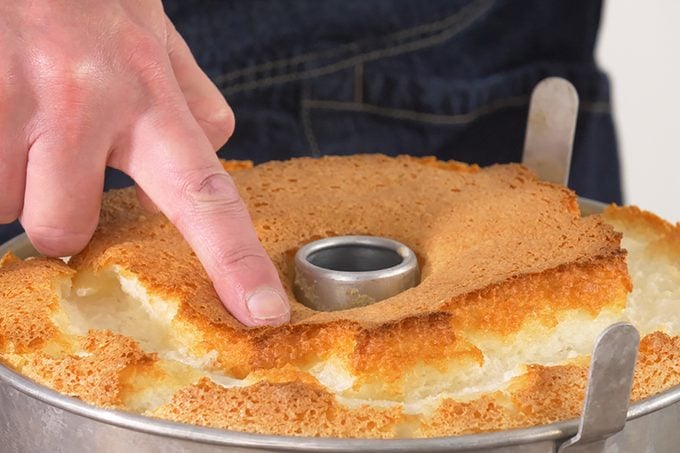
For foam or sponge cakes, the only tool you need to test for doneness is your hand. You can tell when a sponge cake has finished baking by gently pressing the top of the cake. When the sponge springs back, it’s done. If the indentation remains, give the cake a few more minutes in the oven.
You can also look at the top of the cake. It should feel dry to the touch—especially around any cracked areas.
Our Favorite Sponge Cake Recipes
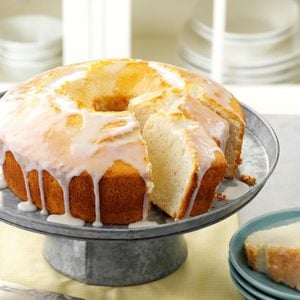 Taste of Home
Taste of Home
This fluffy sponge cake dessert is a real treat drizzled with the sweet-tart lemon glaze. —Rebecca Baird, Salt Lake City, Utah
Get Recipe
We love these
lemon desserts, too.
Marble Chiffon CakeThis confection's a proven winner—it earned me a blue ribbon and was named Division Champion at the county fair! It's our favorite. I'm the third generation in the family to make it. —LuAnn Heikkila, Floodwood, Minnesota
Coconut Chiffon CakeToasted coconut adds visual appeal to this tall and impressive sponge cake dessert. With an airy texture and heavenly coconut-ginger flavor, it's a lovely end to meals throughout the year.
Crazy for coconut? Try these
sweet dessert recipes.
Chocolate Chiffon CakeIf you want to offer family and friends a dessert that really stands out from the rest, this is the cake to make. The beautiful high, rich sponge cake is drizzled with a succulent chocolate glaze. —Erma Fox, Memphis, Missouri
Orange Cream Chiffon CakeLight and luscious, this sponge cake dessert is bursting with orange flavor. It’s the perfect dessert to serve after a filling meal, or with afternoon tea or coffee.—Faith Sommers, Bangor, California
Classic Tres Leches CakeTres leches means "three milks." This cake gets its name because it uses three kinds of milk—evaporated, condensed and cream. This tres leches cake's light and airy texture has made it a classic in Mexican kitchens for generations. —Taste of Home Test Kitchen
Lemon Chiffon CakeThis moist, airy lemon chiffon cake was my dad's favorite. Mom revamped the original recipe to include lemons. I'm not much of a baker, but whenever I make this dessert my family is thrilled! —Trisha Kammers, Clarkston, Washington
Berry Pinwheel CakePerfect for special meals, this lovely sponge cake dessert is a nice change from strawberry pie or shortcake. Don't be afraid t try this jelly-roll-style dessert...it's easy to make. Plus, the waxed paper-lined pan helps make cleanup a breeze! —Becky Ruff, McGregor, Iowa
These
strawberry desserts are perfect for spring.
Blackberry-Topped Sponge CakesThe recipe for my blackberry cakes is easy to play with. You can replace the sponge cake with angel food, pound cake or ladyfingers. And any fruit that has liquor with the same flavor can be used. —Karen Robinson, Woodbury, Connecticut
Layered Orange Sponge CakeThis recipe's been handed down in my family for 40 years, from a relative who was a French baker. It's light, delicate and delicious, just like a great cake should be. —Joyce Speerbrecher, Grafton, Wisconsin
For more vintage treats, check out
grandma's best dessert recipes.
How to Test a Cheesecake
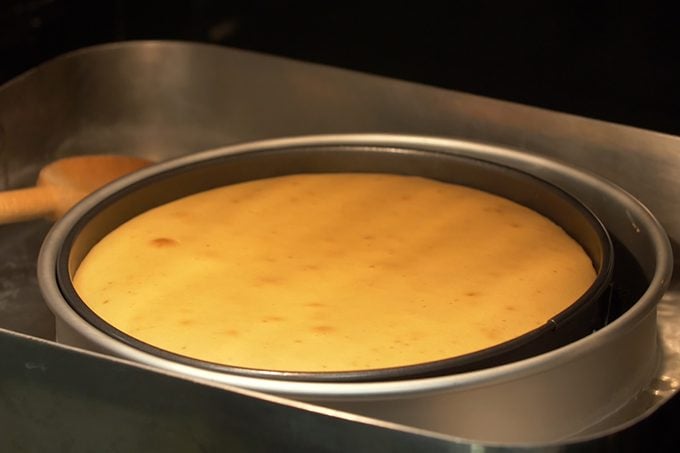
Cheesecake is hands down the most difficult cake to test for doneness. Even when it’s fully baked, the batter still jiggles—but the key is how it jiggles. (If you’re still nervous, read up on these other tips for making the best cheesecake).
To test, open the oven door and gently but firmly tap the side of the cheesecake pan with a spoon. A cheesecake that isn’t fully done will ripple—similar to how a pond reacts when a stone is tossed in. Alternately, a perfectly baked cheesecake will wobble as one unit, swaying back and forth before settling back into position.
Our Favorite Cheesecake Recipes
Red Velvet Cheesecake
Festive and oh, so good, this cheesecake will become a fixture on your party dessert menu. The red velvet filling is spiked with cocoa, topped with cream cheese frosting and baked in a chocolate cookie crumb crust. —Karen Dively, Chapin, South Carolina
Go to Recipe
Dulce de Leche CheesecakeI'm originally from Paraguay, and dulce de leche reminds me of where I came from. If you can't find it at your grocery store, try caramel ice cream topping instead. It tastes different, but this decadent dessert will still be amazing. —Sonia Lipham, Ranburne, Alabama
Yogurt-Ricotta CheesecakeI have always liked Italian ricotta cheesecakes, but they have too much sugar for me. I made a diabetic version, and my family couldn't even tell! I serve mine with sugar-free strawberry ice cream topping and fresh strawberries. —Diane Shipley, Mentor, Ohio
Contest-Winning Blueberry Swirl CheesecakeThis is my favorite blueberry cheesecake recipe, which I often make for family get-togethers. —Cathy Medley, Clyde, Ohio
Frozen Chocolate Cheesecake TartI first made this irresistible dessert for some dinner guests. They were overwhelmed by its rich flavor and appearance. My husband commented that it was the best dessert he had ever eaten in his whole life. —Heather Bennett, Dunbar, West Virginia
Mocha Truffle CheesecakeI went through a phase when I couldn't get enough cheesecake or coffee, so I created this rich dessert. Its brownie-like crust and creamy mocha layer really hit the spot. It's ideal for get-togethers because it can be made in advance. —Shannon Dormady, Great Falls, Montana
Cinnamon Apple CheesecakeAn attractive topping of cinnamon-spiced apple slices and a homemade oat-and-walnut crust make this creamy dessert a definite showstopper. —Emily Ann Young, Edmond, Oklahoma
Chocolate Chip Cookie Dough CheesecakeI created this recipe to combine two of my all-time favorites: cheesecake for the grown-up in me and chocolate chip cookie dough for the little girl in me. Sour cream offsets the sweetness and adds a nice tang. Everyone who tries this scrumptious cookie dough cheesecake loves it. —Julie Craig, Kewaskum, Wisconsin
S'more CheesecakeThis luscious dessert is just as wonderfully tasty as the campfire snack that inspired it. It's a great way to savor a summer classic anytime of year. Our 4-year-old daughter likes it so much that she's requested it for her next birthday! —Robin Andrews, Cary, North Carolina
Pineapple Pie with Coconut CreamYou’ll find pineapples and coconuts everywhere in the South Pacific, so we play them up in this creamy cool pineapple pie, dolloped with coconut cream. Divine! —Karen Naihe, Kamuela, Hawaii
Honey Pecan CheesecakeBirthdays and holidays are great times for cheesecake. In our annual church bake-off, it won first place! —Tish Frish, Hampden, Maine
Creamy Tiramisu CheesecakeThe Italian word "tiramisu" means "pick-me-up" and refers to a dessert of ladyfinger sponge cake dipped in coffee. Work that in with cream cheese, and you have a guaranteed picker-upper that redefines a classic. —Mrs. Priscilla Gilbert, Indian Harbour Beach, Florida
Pistachio Cardamom CheesecakeCardamom has a sweet and warm taste that makes you think of clove, allspice and pepper all wrapped in one spice. Mix it with pistachios and add to cheesecake for a dessert that suggests the exotic flavors of India. —Carolyn Harkonnen, Loomis, California
Chocolate Turtle CheesecakeI always get compliments when I whip up this rich little cheesecake. With layers of caramel, chocolate and vanilla, it's an instant classic. —Erin Byrd, Springfield, Missouri
No-Bake Chocolate Chip Cannoli CheesecakeI make this cannoli cheesecake in the summer for a flavorful and refreshing treat. I love the added bonus of not having to turn on the oven in hot weather. —Kristen Heigl, Staten Island, New York
Chocolate Malt CheesecakeMy mother-in-law loved chocolate
malts—and cheesecakes, too. Can you guess who passed this recipe on to me? Sometimes, I substitute pretzel crumbs for the graham cracker crumbs. They make a surprisingly good crust! —Anita Moffett, Rewey, Wisconsin
Roasted Banana & Pecan CheesecakeWe keep bananas on hand, but with just two of us in the house, they ripen faster than we can eat them. That makes them perfect for roasting and baking into this cheesecake with a nutty crust. —Patricia Harmon, Baden, Pennsylvania
Chocolate Truffle CheesecakeIf you delight in the taste of chocolate, then this is the cheesecake for you. Every creamy bite melts in your mouth. It's so impressive yet not difficult to prepare—I whip up this dessert each time I want a yummy treat for my family, friends or co-workers. —Mary Jones, Cumberland, Maine
Coconut Cheesecake & Rhubarb CompoteI took my daughter’s love of cheesecake plus my mom’s love of coconut and rhubarb and ran with it. Try it with a smidge of chocolate sauce, too. —Wendy Rusch, Trego, Wisconsin
Salted Caramel Cappuccino CheesecakeAfter spending years living in Seattle, I’ve become a coffee junkie! I had to relocate across the country for a time, so I created this cheesecake with the flavors of salted caramel, coffee and espresso. It lifted me up on days when I felt blue about leaving one of the world’s amazing coffee destinations. —Julie Merriman, Seattle, Washington
Spiced Apple CheesecakeWhen you live in apple country, you get the privilege of selecting the apples and recipes you want for year-round enjoyment. Granny Smith apples are tart and crisp. Combined with cinnamon, sugar and nutmeg, they make a delightful topping for a cheesecake of the Pacific Northwest. —Grace Hughes, Oroville, Washington
Luscious Almond CheesecakeI received this recipe along with a set of springform pans from a cousin at my wedding shower 11 years ago. It makes a heavenly cheesecake. My son Tommy has already told me he wants it again for his birthday cake this year. —Brenda Clifford, Overland Park, Kansas
Caramel Fudge CheesecakeIt's hard to resist this chocolaty cheesecake with its fudgy crust, crunchy pecans and gooey layer of caramel. I combined several recipes to create this version that satisfies both the chocolate lovers and the cheesecake lovers in my family. —Brenda Ruse, Truro, Nova Scotia
Winning Cranberry CheesecakeThe holidays wouldn't be complete without cranberries and eggnog. I use them both in this flavorful cheesecake that's the perfect finale for a special dinner. Set it out at the start of the meal, not just to solicit "oohs" and "aahs," but to remind folks to save room for dessert! —Nancy Zimmerman, Cape May Court House, New Jersey
Next, check out the most common mistakes people make when baking a layer cake.





